Chris' Top Ten of 2014
It’s that time of year again, halfway through the year, which means it’s time for Chris’ top ten from 2 years back!
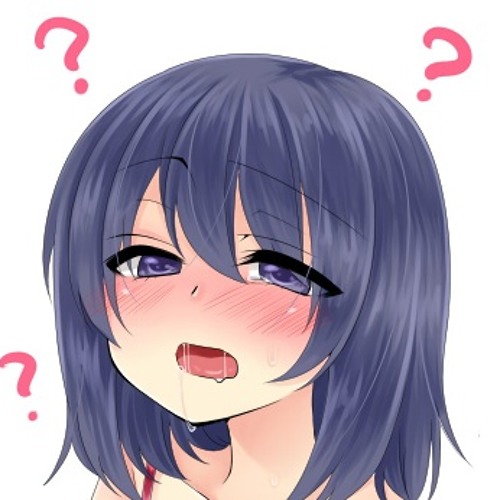
But I don’t even remember what I watched yesterday
Rules for the list:
-
Anime on this list are those that finished in 2014. That means that anime that finished airing in 2015 were not considered for this list; conversely, anime that began in 2013 and finished in 2014 are fair game.
-
While I will avoid significant spoilers, it’s pretty difficult to review a show in any detail without revealing something. If you’re the type that’s afraid to watch commercials or read the back cover for fear of spoilers, you may consider skipping over entries you haven’t seen. If I do plan to spoil huge things, I will leave huge tags. You’ve been warned.
-
There will be no sequels on this list.
10. Isshuukan Friends
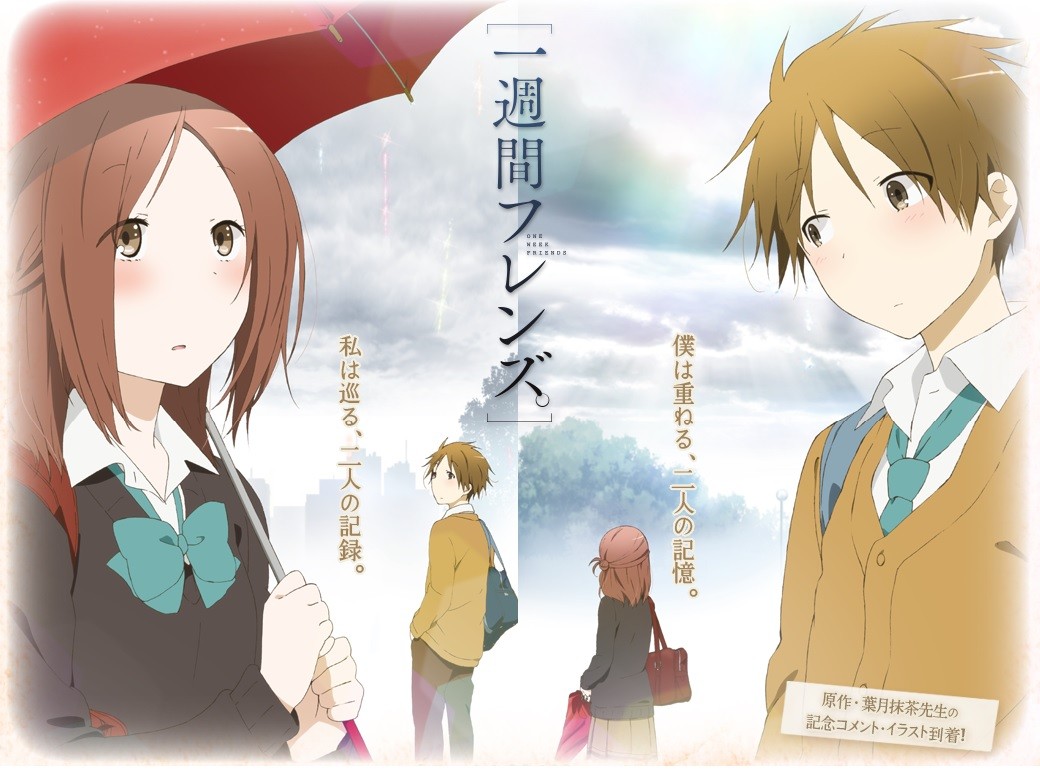
As the name implies, the story centers around a boy’s attempts to woo a girl whose memories are reset every week on Monday morning. So it’s sort of like MMO rep grinding, except that the quest NPCs mysteriously lose their ledgers during the weekly server maintenances.
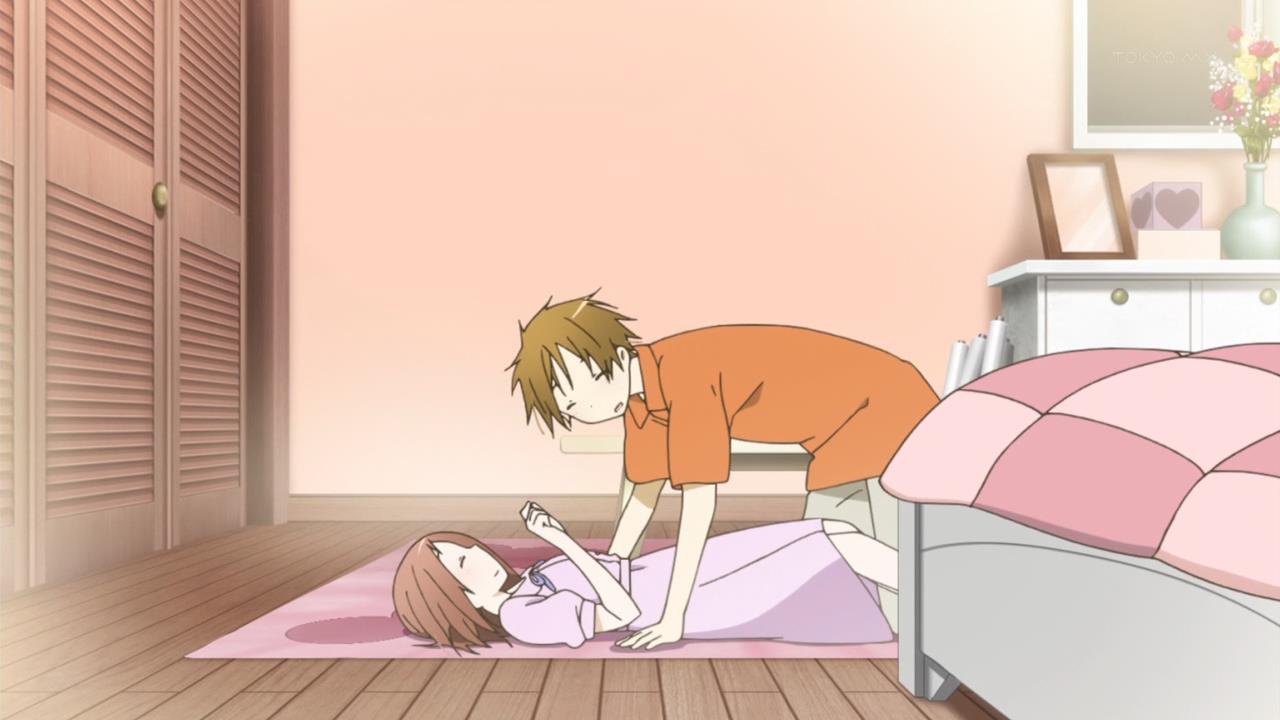
“Working as intended” because there’s actually no content after first base
I was hesitant to watch this at first, because while this type of premise has a lot of potential for exploring human nature through some fairly unique lens, it also has the potential to be misused as an infinite source of free drama. And as much as I praised Ano Hana three years ago, I was not particularly interested in watching a montage of how shitty people are.
So it was actually somewhat surprising to see that Isshuukan Friends does neither of these things and makes itself a thoroughly ordinary anime.
For the girl in question, Fujimiya Kaori, the weekly reset only affects memories of people she’s close with – in other words, she forgets about any friends she made the last week. While that obviously makes it harder for her to make friends, it also means people can’t really take advantage of her without going through the process of befriending a girl who doesn’t actually want to make friends. So it’s sort of like MMO rep grinding.

“I guess I could sell you shitty aesthetic items, but you really need to pony up those 200 pristine bear asses first.”
In addition, for the memories of friends she actually wants to keep, she has the enormously sensible and anticlimactic solution of just keeping a fucking diary so she knows which table she’s supposed to sit down at during lunch. Honestly, despite her disability, she’s probably the most well-adjusted character in the whole show. Except maybe when she uses an optimization matrix to determine the optimal lunch recipe for Yuuki.
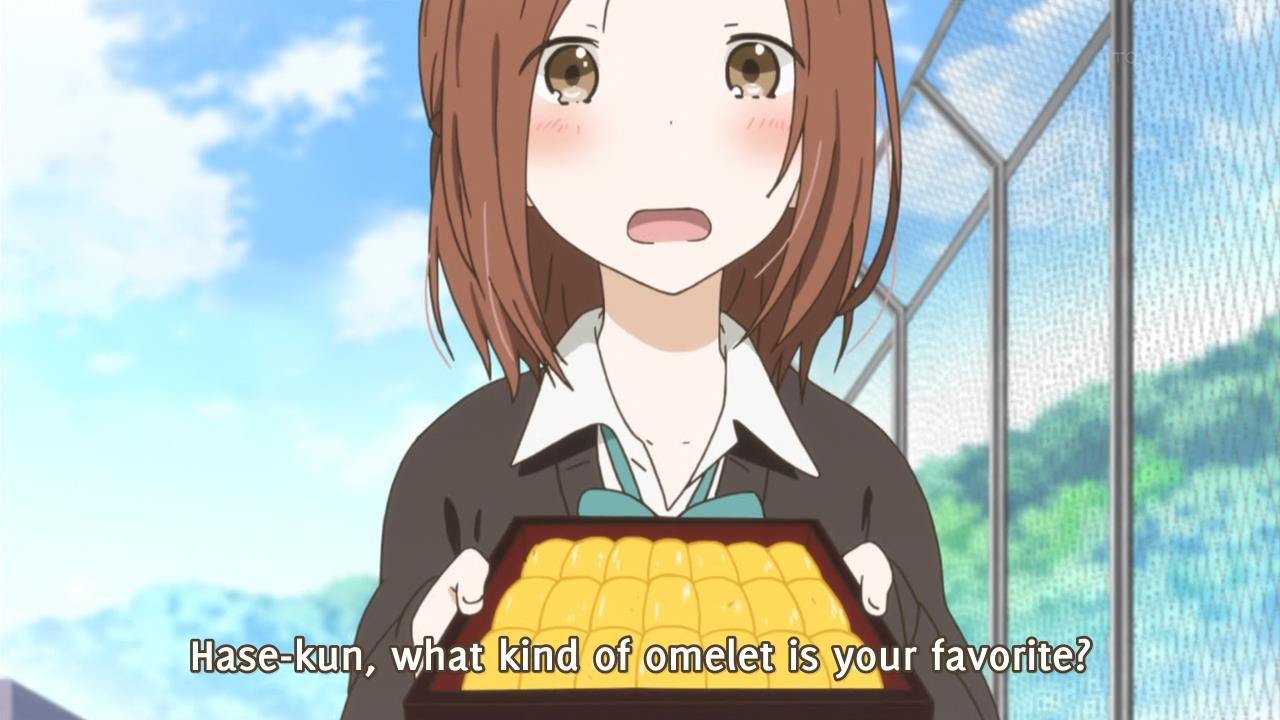
“Also, one of these has a live bee in it because fear is a better spice than love.”
So despite what the premise would have one believe, the show is mostly about the growth of the male lead, Hase Yuuki, who is surprisingly not an insufferable white knight that feels bad for Kaori. He just thinks Kaori is cute and wants to be friends with her. He succeeds at finding his place in the Diary of Kaori by taking a fairly assertive approach, and the rest of the anime is filled with mostly normal RomCom scenes, like studying for exams and going to coffee shops and summer games.
Of course, the show doesn’t completely ignore its premise, and does manage to use it as a focal point upon which the main couple grow. However, similarly to Usagi Drop, this anime keeps its scope to the development of the main couple’s relationship, and doesn’t concern itself with logistics or any complicated scenarios. As I mentioned earlier, this prevents it from becoming mired down by drama, but also prevents it from really shining as a unique story with unique characters. Isshuukan Friends chooses to remain in comfortable territory, hence its modest ranking.
The weakest point of this show is also quite ordinary – the supporting cast is fairly weak. Their primary purpose seems to be to offer relationship advice to the main couple, and they are given very little screen time of their own. There is of course only so much a studio can do with 12 episodes, but without any real motivations of their own to make them independent of the main characters, the supporting cast feels more like a set of plot devices than characters. Even a single episode that focuses on the relationship between Yuuki and his best friend Shogo, or Shogo’s relationship with his own childhood friend, would have gone a long way in rounding them out.
tl;dr version
Pros:
- Not just a documentary of bullying
- Male lead feels like a real person with real motivations
Cons:
- Some wasted potential by taking the easy way out
- Secondary characters are notably flat
9.Tokyo Ravens
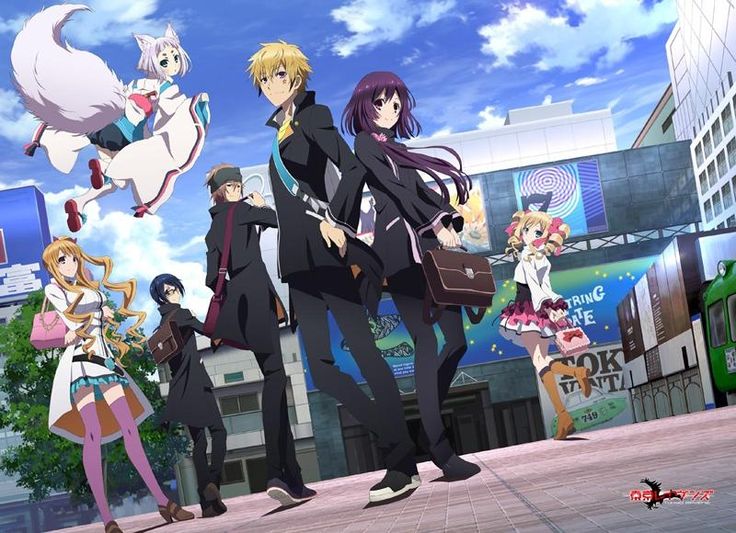
This one’s a shounen. If you’ve forgotten it already, it was the one where we identified Hanazawa Kana based on her character design, before she said anything.
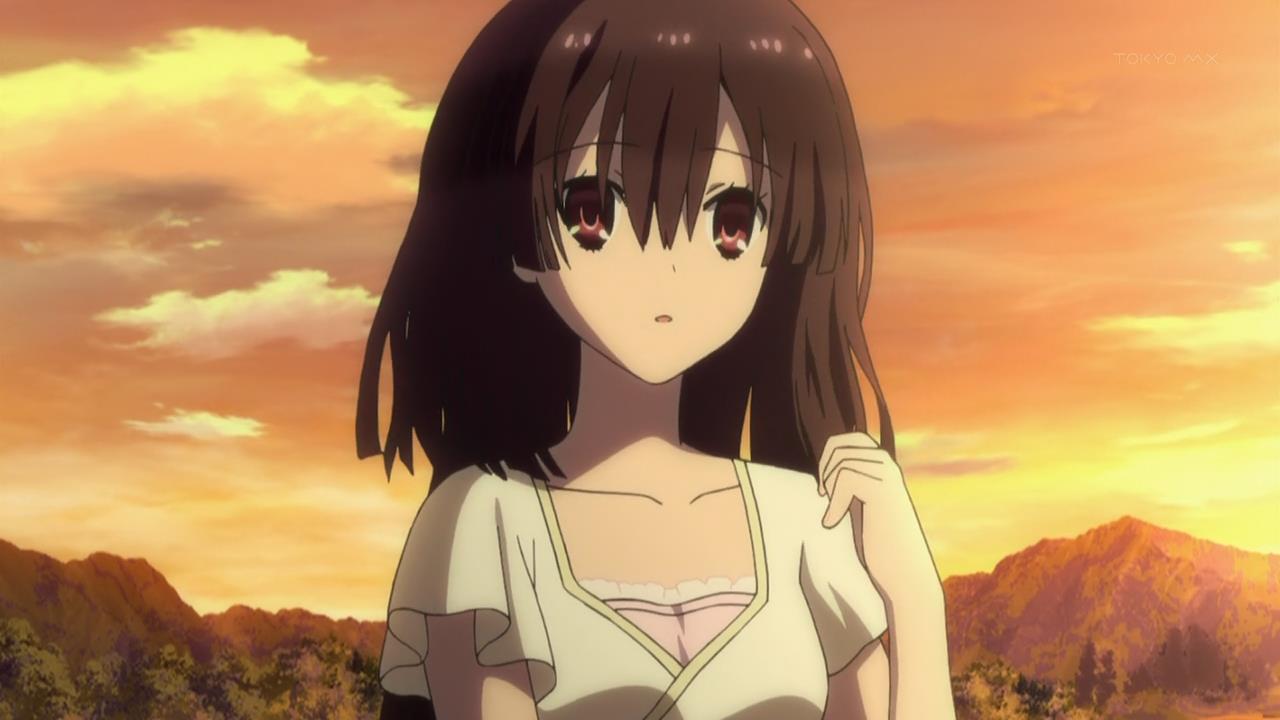
I suppose if you’re cast for enough harems, you will statistically win the MC-bowl eventually.
This shounen is magic-flavored, and the comedic spellcasting antics of Japanese Harry Potter and friends are made marginally more amusing than its myriad equivalents by the fact that Hanazawa Kana tries to cross-dress for half the anime for political reasons.
For a 24-episode shounen, Tokyo Ravens spends unusually little of that time on RomCom harem shenanigans. The first half-dozen episodes or so still fall into a slow, unimpressive, introductory rut that seems to plague many of its genre. However, the rest of the anime manages to push the plot forward at a respectable pace, maintaining a fairly serious atmosphere throughout. Additionally, while Harutora does build a semblance of a harem, it feels more like a formality than a significant point, and this can honestly be said of romance in general in this anime. While I don’t know I would go so far as to say the writing is particularly strong, it is refreshing to see that it is at least confident enough to support itself with meat rather than leaning on filler content like beach and baseball episodes (which usually serve only to break the flow). At the same time, it avoids becoming too heavy and gritty, and this balance it strikes allows Tokyo Ravens to keep a fairly clear and consistent purpose throughout.
In line with this, Tokyo Ravens does not forget the main selling point of shounen – the action. It sounds obvious, but I think a lot of modern shounen spend too much effort trying not to appear childish or trivial, either making themselves too complex or hardboiled (might I even say edgy) in a misguided attempt to appeal to an older audience. Rather, Tokyo Ravens opts for a textbook approach to the plot and character design, and this may actually be the cleanest choice. While that does makes the character development pretty shallow and the story pretty predictable, it at least allows the production staff to focus on making the action scenes worth watching. As with comedy, the timing is key to good action. The intensity curve in each action scene is generally handled well, preventing the viewers from becoming bored before the finish. This is true even for the final act, which stretches over several episodes. Pacing is kept consistent and the writing’s trump cards are revealed at appropriate times, allowing each character their time in the spotlight without making their powerups feel contrived. Given how rarely I see this executed cleanly, it must be harder than I take it for, so I should give credit where credit is due.
So despite carrying all of the stigma and clichés that come with being a shounen, Tokyo Ravens does a respectable job of remaining engaging by leveraging its action scenes effectively. I honestly don’t know if the fact that this justified a top 10 spot for me says more about the anime itself or about the genre as a whole, but you get what you get with shounen, and a clean execution is the best you can ask for.
tl;dr version
Pros:
- Pacing is handled fairly well
- Timing is on-point during action scenes
- Ending was not a miserable failure
Cons:
- No real character development
- Beginning is pretty slow and unimpressive
8. Log Horizon
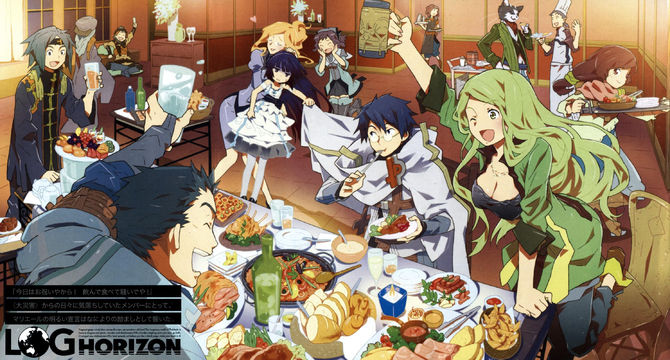
Riding fairly close on the very popular and successful coattails of Sword Art Online, Log Horizon chronicles the story of MMO players who suddenly find themselves mysteriously warped into and trapped within the MMO world as their own characters. Not exactly the most original concept (light novels with the exact same premise have been quite popular well before Sword Art Online), and initially, it came off as just a more boring, more poorly animated version of SAO. It wasn’t until I noticed it was getting a fair bit of attention and praise that I decided to pick it back up, at least for a few more episodes. I was right about it being more poorly animated, and it is certainly slower than SAO, but as I found, the comparison is not quite valid.
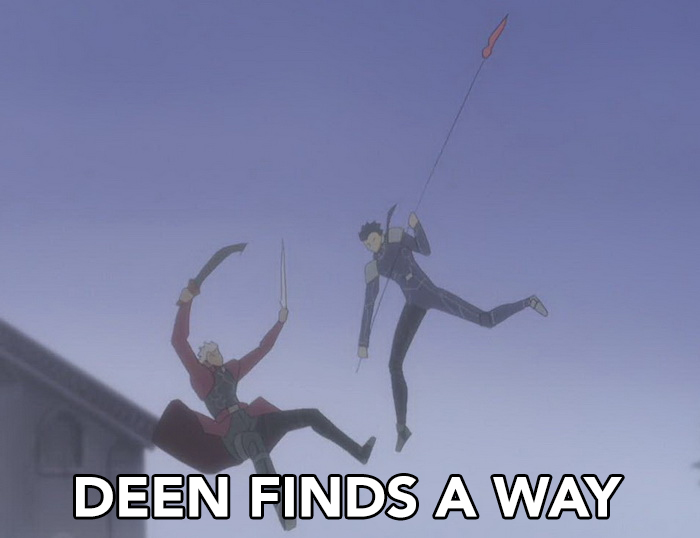
DEEN taking over in Season 2 didn’t do much to help.
The most immediately obvious difference is how large a role the MMO setting plays. In SAO, we are reminded that Kirito and friends are in an MMO when they mention quests or loot, or when someone brings up the in-game UI, but for the most part, mechanics are hand-waved. The anime plays out more like a fantasy story than a game-based one. In contrast, the MMO setting pervades deeply into every part of Log Horizon. All the food tastes the same because flavor hasn’t been implemented. Any attempt to cook without the specific cooking sub-class, even just heating up meat over a fire, always results in failure items. Monsters explode in an improbable shower of gold of and items. Abilities have cooldowns. And death just warps you to the nearest town. Elder Tale is a game designed to be played with keyboard and mouse, not a VR headset.
Furthermore, Log Horizon models its game mechanics after a Western-style MMO, not an Eastern-style MMO. Eastern-style MMOs traditionally focus on solo-play and action-based combat, where the key to winning fights is player skill – combat revolves around dodging enemy attacks and successfully landing your own. Conversely, the MMO in Log Horizon (Elder Tale) uses a trinity-based system (tank-healer-DPS), and focuses on group-based content with many-player raids as the highest level of play. Combat revolves primarily around knowledge of the encounter, maximizing efficiency as a player, and communication with the rest of the party. Battles in Log Horizon are not won by flashy displays of strength, skill, and reflex, but rather the “boring” core elements of Western MMO gameplay – careful planning, raid positioning, gear choice, racial and class traits, cooldown management, add management, boss AoE timing, etc. While I am not sure what consequences this decision had regarding its Japanese audience, it certainly did help engage me as an MMO fan.
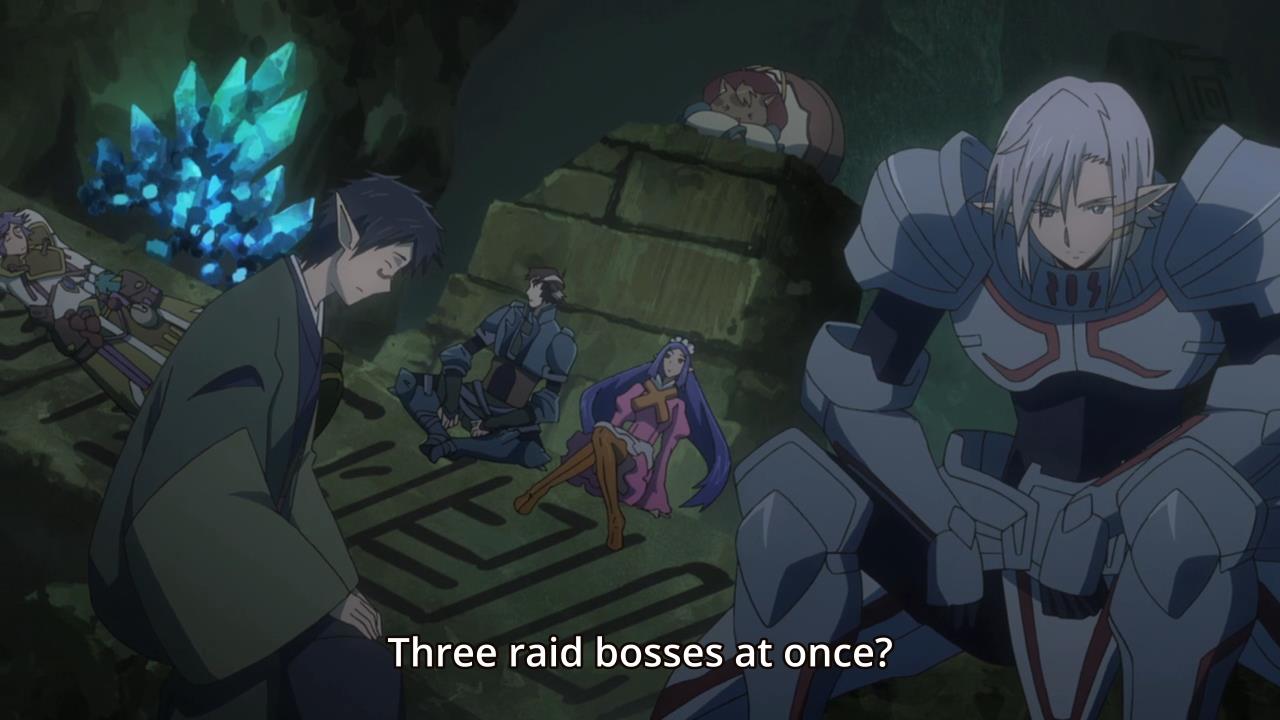
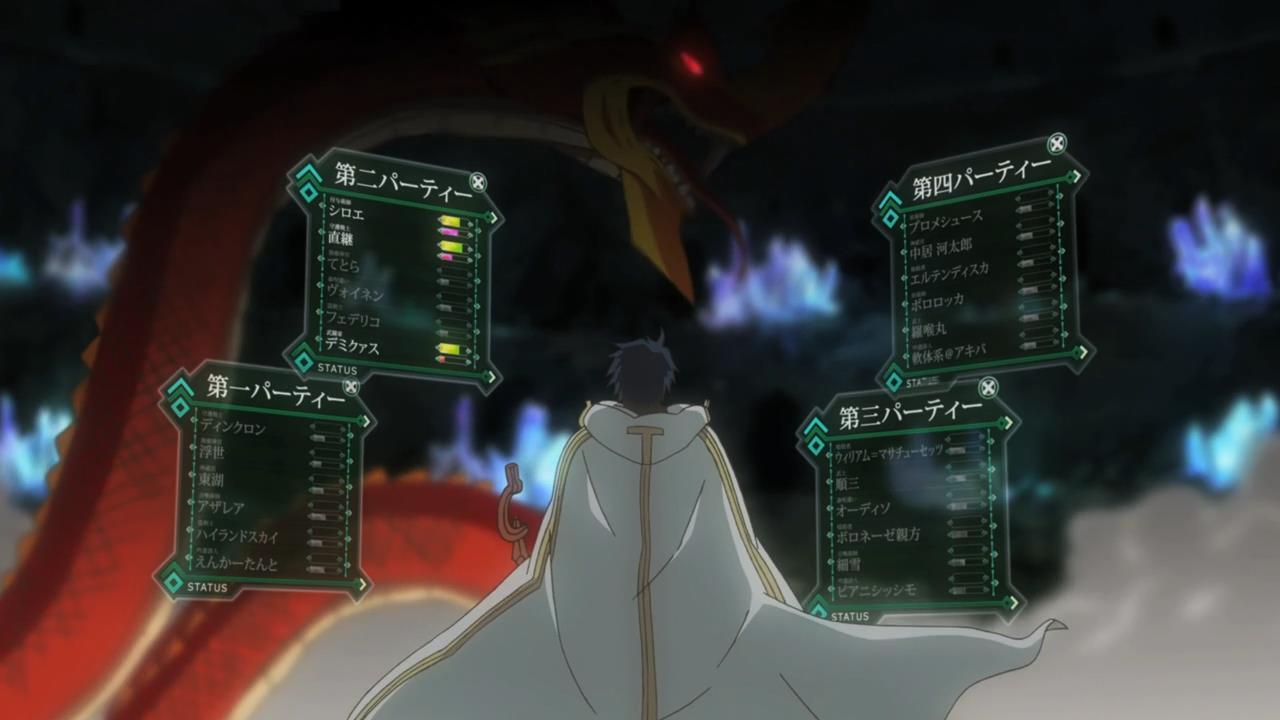
Pictured above: FunTM
The mechanics of Elder Tale don’t only affect the action scenes – it has a notable effect on the characters. As I mentioned before, a skill-based game like the one in SAO is more akin to a fantasy setting than a game, and the characters are therefore a lot like the ones you would find in any other shounen – young, talented, and optimistic. Ability growth (and often character growth, simultaneously) can be done quickly, where a character’s “willpower” or “friendship power” or what-have-you translates instantly into a tangible skill increase that suddenly allows them to overcome previously impossible encounters. Not so with Log Horizon – player “skill” is more heavily tied to experience and knowledge, and that necessarily comes slowly. Therefore, the main cast of Log Horizon is a highly experienced crew, having cleared virtually all of the content by the story’s beginning. They are older and a bit more mature than the typical shounen cast, and character development becomes somewhat secondary. This allows for quite a different story, and indeed, Log Horizon puts more focus on the development of the setting. The characters use their knowledge and connection to shape the MMO world, and the story centers on these efforts rather than the characters’ mastery of the game.
Still, it is a shounen, and a lot of the same issues with Tokyo Ravens is present here. There is a secondary cast of younger, lower-level players who fill a lot of the standard, tired archetypes. Harem antics do exist, although it’s kept to reasonable levels. And as I mentioned before, the technical execution is wanting – animation is acceptable at best, and jarring at worst. Furthermore, Log Horizon juggles quite a few plot threads, and while pacing for the primary arcs are generally handled well, the interweaving is not. Certain plot points are introduced far earlier than needed, which not only distracts from the current story, it makes the transition back rather awkward. Additionally, concurrent stories are occasionally switched off at awkward moments, breaking the flow.
Honestly, I probably enjoyed Log Horizon more than I should have because of how well it manages to capture actual MMO gameplay without becoming too mired in spreadsheets and number crunching. If you care nothing for MMOs, Log Horizon will probably come off as a substandard shounen, but for MMO enthusiasts, it might be worth a look.
tl;dr version
Pros:
- Not just an SAO clone
- Reasonably accurate portrayal of Western MMOs
- Focus on the setting sets it apart from other shounen
Cons:
- Subpar technical execution
- Pretty slow, especially if MMOs aren’t your cup of tea
- Clumsy handling of parallel plot threads
7. Yuuki Yuuna wa Yuusha de Aru
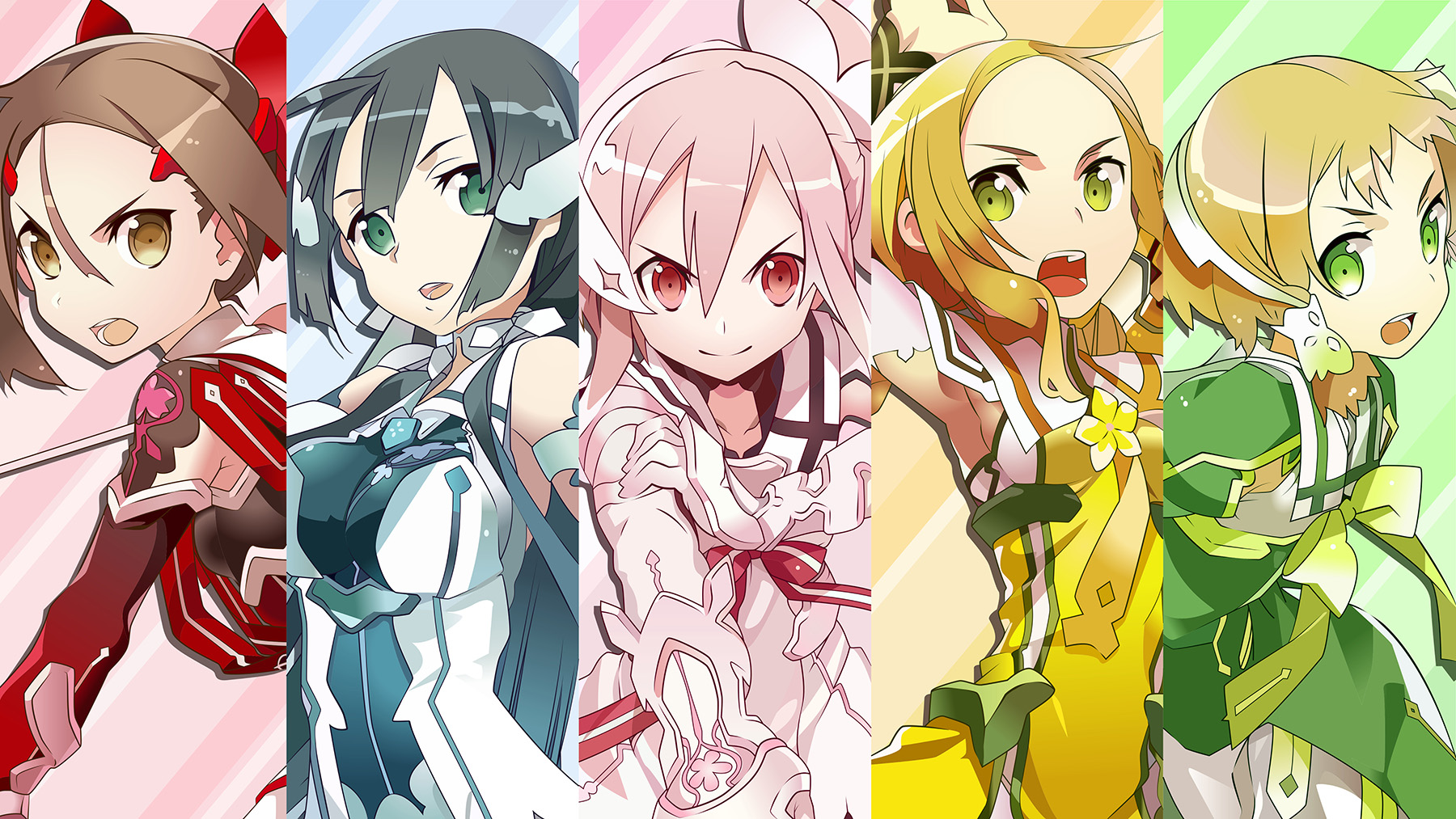
Yuyuyu is a mahou shoujo set in a strange universe where Earth is kept safe from strange hostile aliens by a central tree-like entity known as the Shinju, with the main cast acting as its arms and legs to fight the Vertex on the front lines. It’s another somewhat forgettable entry, and in the case you have forgotten it, it was the Madoka look-alike that also featured a girl in a wheelchair.
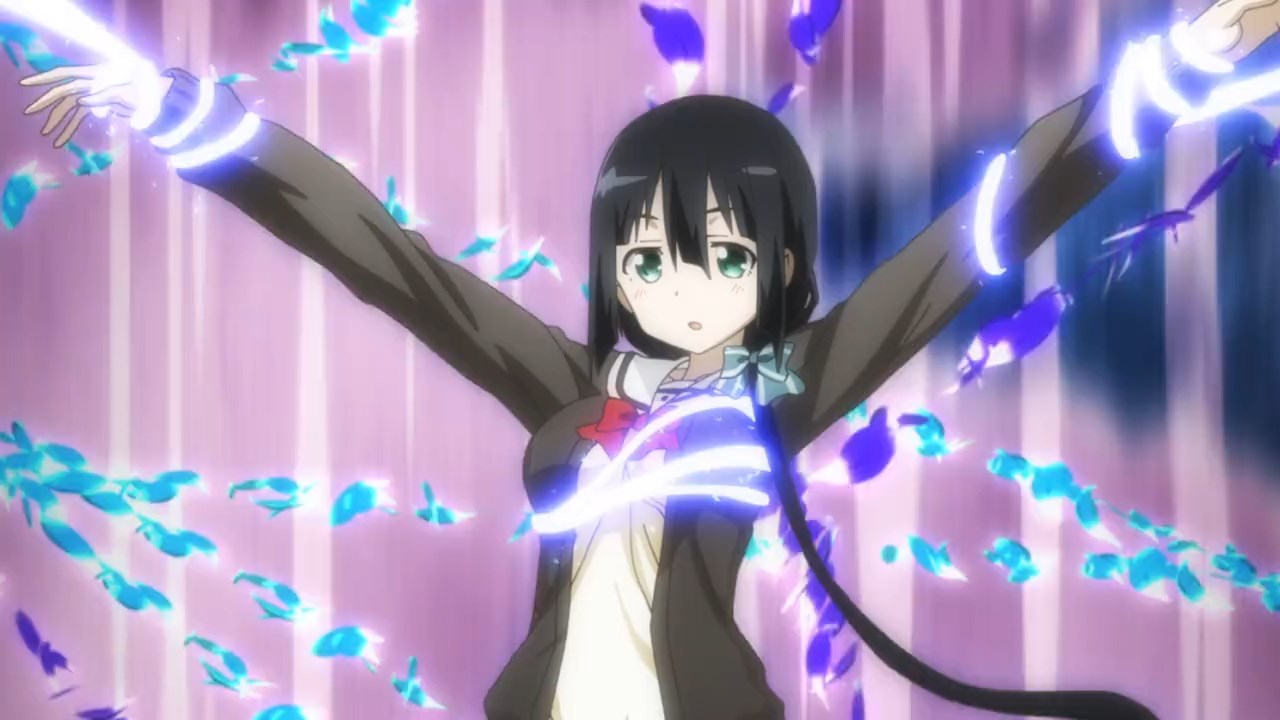
Anime conservation of mass dictates that atrophy of leg muscles forces that mass to go elsewhere
And yes, it certainly does seem to earn its label as a Madoka clone, being a mahou shoujo where the girls are contracted by an entity with vague motivations to fight weird aliens. Without spoiling too much, the story unfolds in a pretty similar manner, right down to which-hair-color-does-what.
Looking back at it again, however, Yuyuyu feels more akin to a Key Visual Arts drama than to Madoka (the uncanny plot parallels aside) in that it builds toward a set of emotional climaxes, often at the expense of everything else. While I am still an avid fan of Key’s works, I am the first to admit that it always walks a fine line between high emotional impact and silly melodramatic nonsense. I believe that the less relatable a character is, the harder it is to form an empathetic emotional investment in that character, and because Key tends to go off the deep end with its supernatural elements, it’s easy to lose suspension of disbelief. And once the viewer has stepped outside that bubble of immersion, it’s very difficult to get them back in. Yuyuyu plays a similar game, and whether or not it succeeds is debatable, as demonstrated by the visible division in the viewer response. The relevant mechanics of the mahou shoujo system are not explained particularly well and don’t exhibit much consistency. Important plot points are revealed through exposition from secondary sources, which makes them feel more like…exposition rather than development, and dampens the impact. Finally, most likely due to time constraints, character development feels pretty lop-sided, with certain characters getting significantly more limelight than others.
However, when it comes time for Yuyuyu to play its trump cards, it plays them with force. As with Key, Yuyuyu sacrifices the coherence of the big picture to build singular moments of climax. The lack of stability in this approach makes it a gamble, but since I think people tend to remember moments better than the whole, I do believe it’s a legitimate strategy. On a related note, Yuyuyu has one of the best uses of an insert vocal track I’ve ever seen, and I have a huge bias towards synchronization between music and choreography.
Reviewing emotional impact with any sort of real objectivity is difficult and usually leads to unintelligent gushing, so I’m going to cut this review short. It also bothers me that the vast majority of both the criticism and praise for this show is related to how it compares to Madoka, so if anyone feels convinced to give Yuyuyu a shot, try not to let the shadow of Big Sister affect the experience too much.
tl;dr version:
Pros:
- Effective use of climax
- Effective use of insert tracks
- Interesting take on the “cost of power” theme
Cons:
- Lack of overall consistency
- Uneven character development
- Your Mileage May Vary on emotional impact
- I didn’t like the ending again
6. Kill la Kill
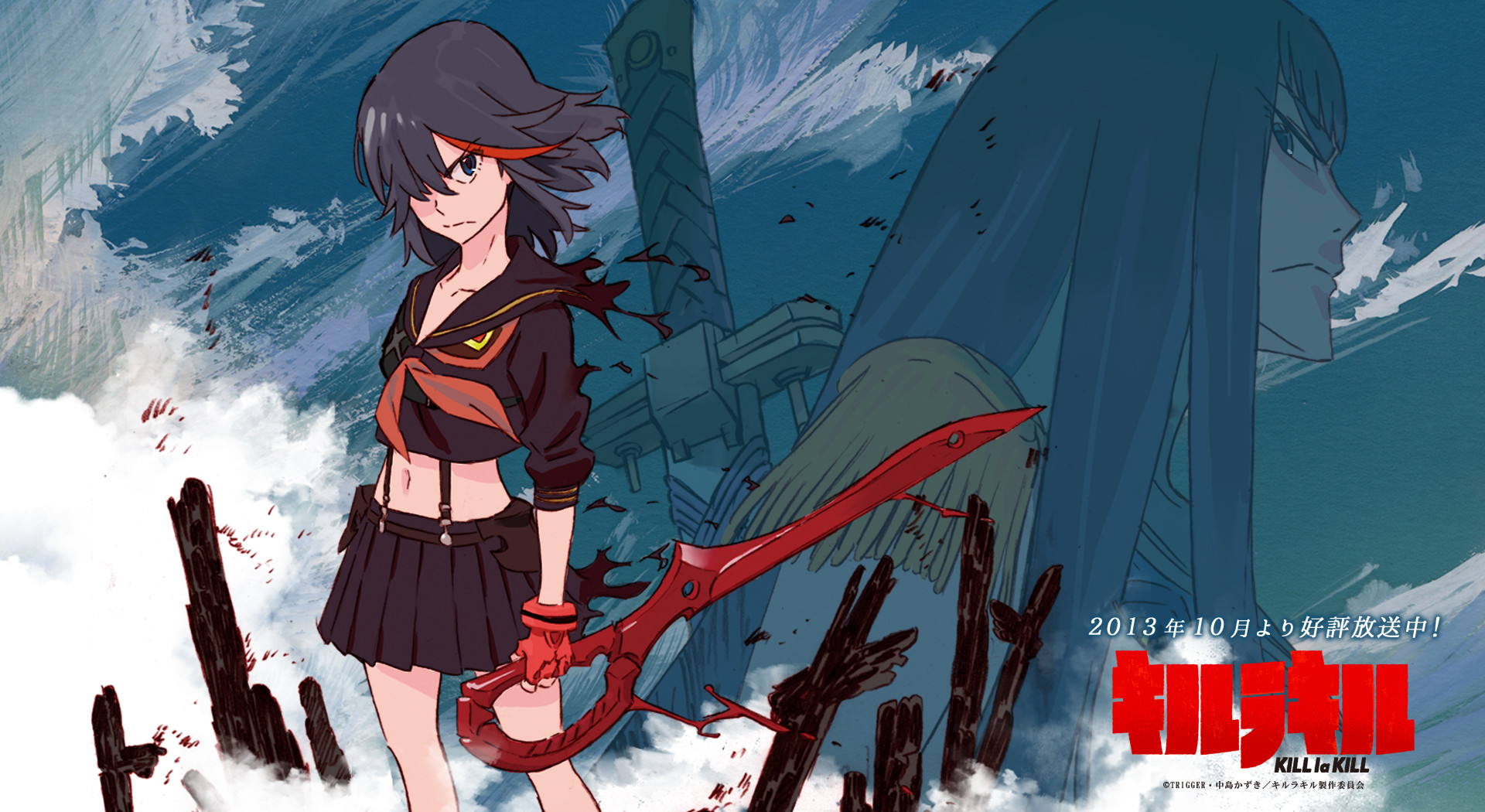
The over-the-top shounen from Trigger, which honestly, if you haven’t heard of it by now, means you need to stay inside more.
Even before its airing, Kill la Kill gained a considerable amount of hype and kept its popularity through its entire broadcast. Its defenders push its gratuitous fanservice and style-over-substance plot as deconstruction, claiming that its heavy use of old anime tropes is intentional parody and even going so far as to paint its highly sexualized female cast as a message against gender discrimination that supports the image of strong women.
Well, I am of the opinion that ironic shitposting is still shitposting. “Deconstruction” is a trendy buzzword that’s used too often to defend things that are probably just as shallow as they look. Madoka Magica got away with it, and now everyone else is trying to pass off their favorite shitty anime as social commentary on shitty anime.
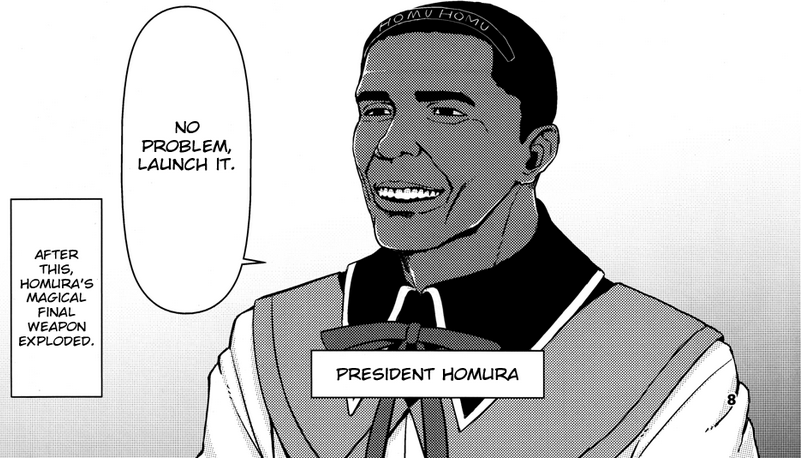
Thanks, Obama
No, I don’t think Kill la Kill is parody, or satire, or SJW, or anti-SJW, or whatever else people like to label it. Sometimes the stylized action works and it’s amusing. Sometimes it’s not. The fanservice can get distracting, but I actually don’t think it’s capitalized on that often so it’s not too much of a problem. Kill la Kill is just a shounen, and a pretty average one in many respects. And so this review will also be pretty shallow and average.
There are two main things that put this anime on this list.
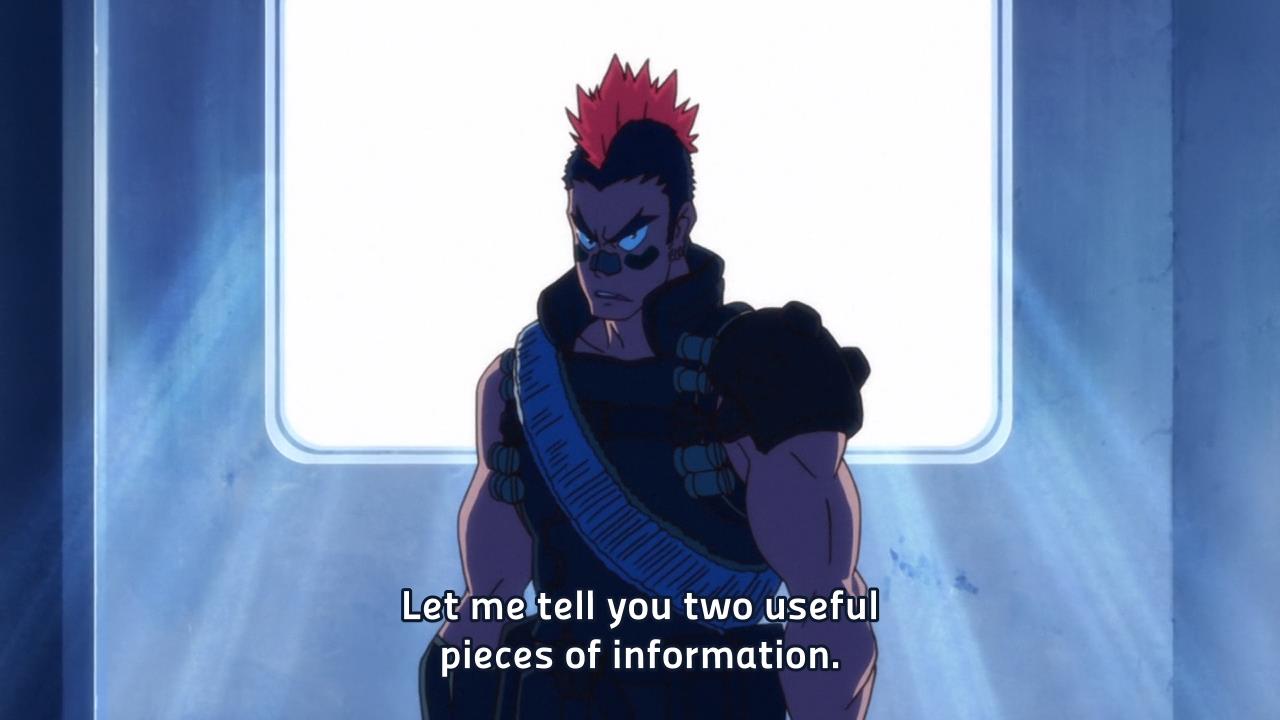
This obvious joke is actually a deconstruction of overused low-effort memes
The first is Kiryuuin Satsuki, who I honestly consider the main character because she’s so much more interesting than Ryuuko. High school shounen are usually about the journey and growth of the protagonist, but Ryuuko changes surprisingly little from beginning to end. Her philosophy isn’t revised very often because she ends up solving all her problems with the same toolkit. This isn’t necessarily bad, per se, but it’s in stark contrast with Satsuki, who develops significantly as a character despite being the antagonist for 2/3 of the anime. Satsuki is a more complex character, who rules Honnouji Academy with an iron first while simultaneously dedicating herself to her subjects. Despite this, she feels consistent as a character. Even when she later undergoes a major turning point, she does so without breaking her character. This is primarily because she’s written top-down from her motivations and goals rather than the other way around. It feels like the writers asked “given a character that thinks like this and wants to achieve these things, how might she behave?” rather than “we need a character that behaves like this, let’s write her motivations to justify that behavior”. And while I’d like to give the writers credit for that, it’s a bit hard because most of the other characters seem to come from the latter school of thought. Satsuki’s Elite Four are mostly there to support her and be obstacles for her opponents. Ryuuko is there to be the optimistic main character that glues the plot and other characters together. Mako is there to be Ryuuko’s emotional crutch. Again, these kinds of characters are not necessarily bad – it’s honestly pretty hard to write an entire cast of characters like Satsuki and still get a coherent story out of it. But still, while these characters can be used effectively, they’re often overshadowed by Satsuki.
The second is more subjective, and is similar to what I praised Tokyo Ravens for – the way it paces its intensity curve at the end. Until the end of the Three Schools arc (where Satsuki is still the antagonist), KLK plays out like any number of shounen, with Ryuuko initially battling against the villain’s minor officers, moving on to “The Four ____” after learning some new skills, and finally graduating to a climactic battle against the villain herself. After the major plot twist, however, KLK manages to maintain a fairly high level of tension without blowing its load too early, preventing both filler-esque stretches of boredom and desensitization from chaining too many climactic scenes together. The soundtrack plays a major role in this, doing a stellar job of emphasizing the strong moments.
While the action and fighting itself tends to be fairly uninspired, KLK does succeed in the most important thing for a shounen – it does not become boring. Satsuki’s characterization is a pleasant surprise in a shounen, and combined with my low expectations going in, KLK was surprisingly enjoyable.
tl;dr version:
Pros:
- Satsuki’s character development
- Well-paced intensity curve
- Good soundtrack
Cons:
- Fight scenes don’t really stand out
- Side cast is somewhat underdeveloped
5. Gekkan Shoujo Nozaki-kun
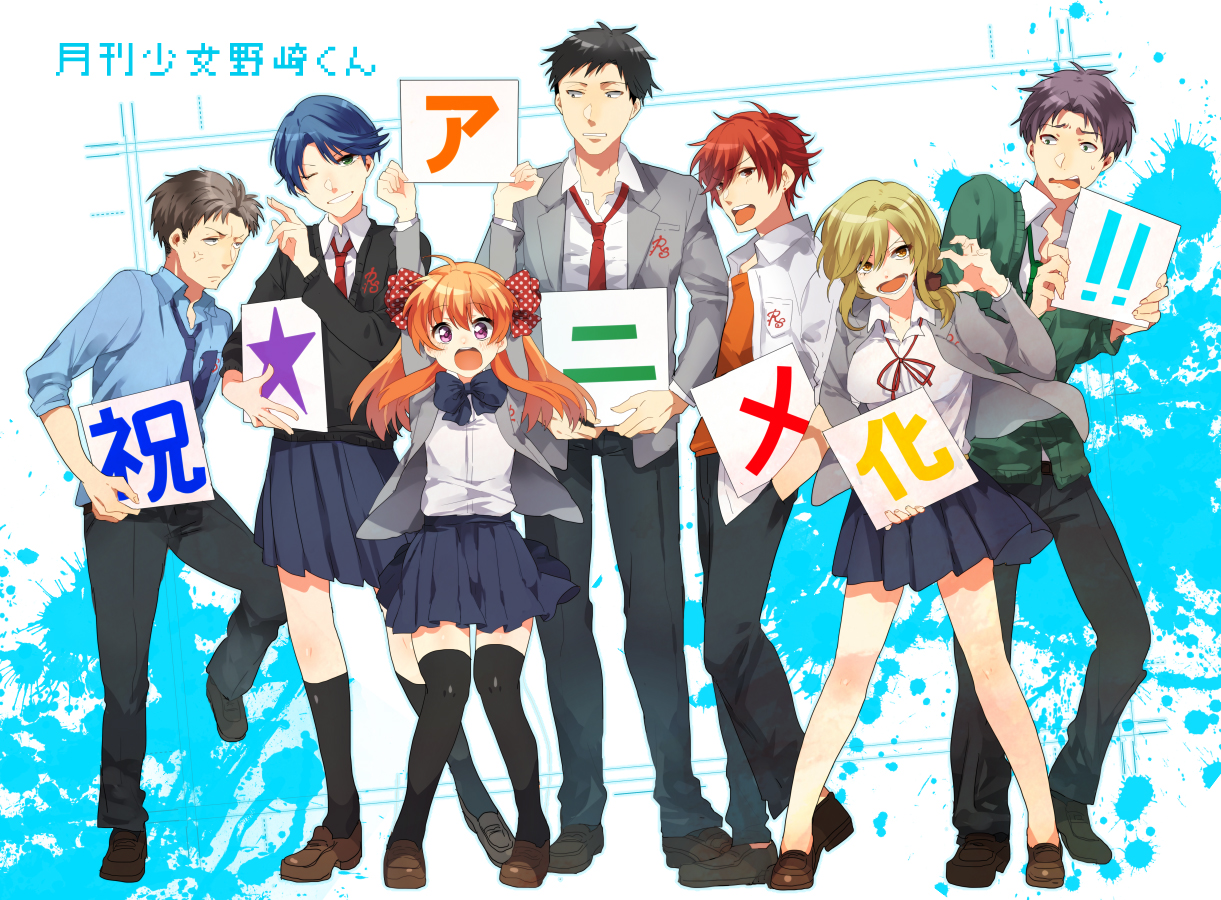
This anime is based on a 4-koma RomCom about Nozaki Umetarou, a high school boy who moonlights as a shoujo mangaka. Sakura Chiyo, the main heroine who obviously has a crush on him, assists him with his manga along with other friends of Nozaki’s. I watched this at Gene’s recommendation, which overall probably have like a 70% success rate for me, so despite my heavy misgivings on the premise, I watched it through to the end.
I think making anime is sort of like cooking in that there is a huge number of base ingredients you can choose from, and a correspondingly huge number of combinations. Together with the cooking equipment, method, and timing, there are essentially a limitless number of potential dishes you can make. Obviously, the vast majority of random combinations of ingredients and preparation will result in something inedible, and even if something is technically palatable, if the dish is too unique or strange, people will tend not to eat it. So the challenge is to use novel ingredients and methods to work within the finite number of dishes that people are familiar with, while ensuring that it is interesting enough that it is distinguished from common fare.
Of course, not all dishes lend themselves to creative vision. You can pretend to be Gordon Ramsay all you want when you’re trying to impress a date with Foie Gras, but not so much when you’re pouring yourself a bowl of Cheerios in the morning. You can add sugar or honey or sliced fruit or whatever the fuck to your cereal, but it’s still Cheerios, and every bite fills your mouth with that mild, grainy flavor that gently suggests you should make some real damn breakfast for once. If you want it to taste different, eat something else.
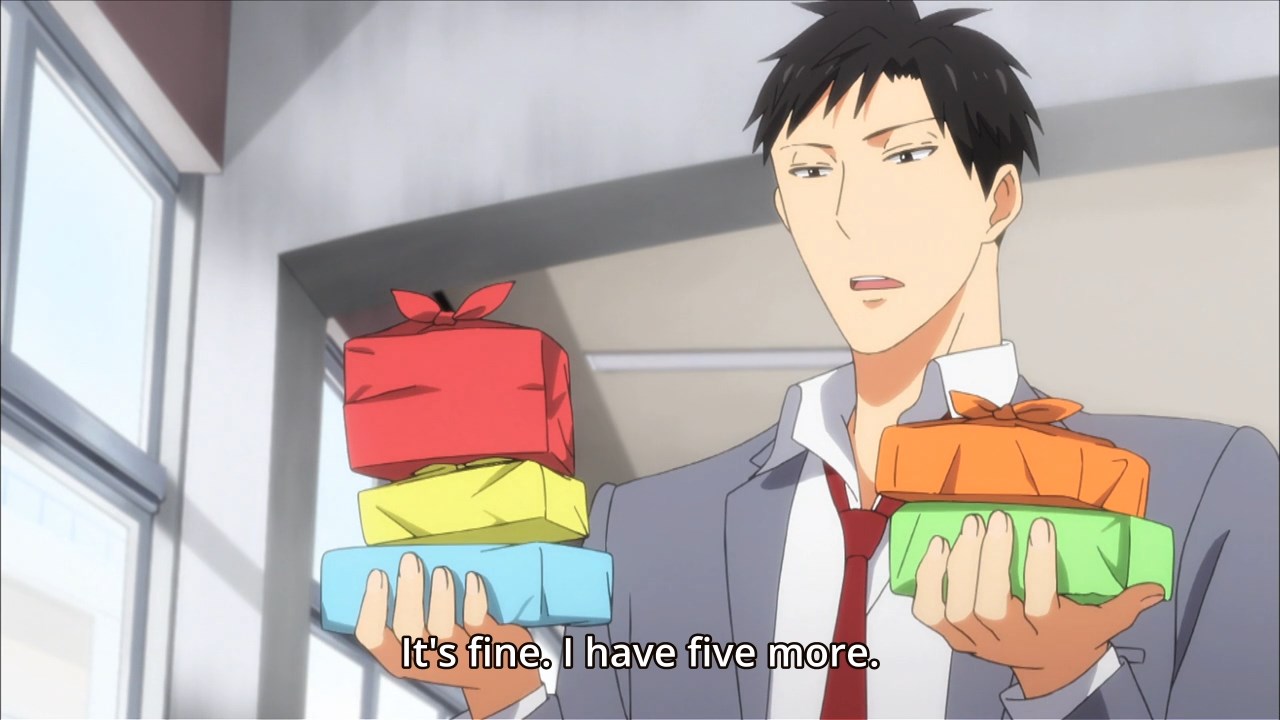
No, really, it’s not like I like you. I bought 20 boxes of Cheerios on a manager’s special and they’re going to expire tomorrow.
If making good drama or psychological or sports anime is like making Foie Gras, then making comedic 4-koma SoL is like pouring a bowl of Cheerios in the morning. There is honestly not a lot you can do to it without making it something else. And maybe that’s okay, because last I checked, people were still eating Cheerios, because they are easy to produce and easy to consume. Gekkan Shoujo Nozaki-kun may be on this list, but I am not going to pretend it was a grain-enriched plate of bacon and eggs. It was a bowl of Cheerios. Once you get past the first episode and the novelty of the premise has worn off, it’s just SoL like any other.
“Gap moe” is the concept that contradicting traits or actions in a character can emphasize them and make the character more endearing. A tough high-school delinquent that regularly engages in assault and robbery but is shown to have a soft spot for animals embodies gap moe. A womanizing playboy that suddenly asks a friend for serious relationship advice in a worried voice embodies gap moe. A normally shy, kind girl that snaps and goes on a violent tirade embodies gap moe. Basically, because the action or trait in question is coming from an unexpected source, people tend to have a stronger response to it, the same way compliments are more valuable from someone who usually yells at you than from someone who’s constantly kissing your ass.
Gekkan Shoujo Nozaki-kun makes pretty heavy use of gap moe, and surprisingly, it does a pretty good job of distracting you from the fact that it’s just a bowl of Cheerios. The cast around Chiyo is a collection of characters you might initially expect to find in an otome game – mostly tall, cool, bishounen. But as you probably guessed since I already gave away the punchline, the cast ends up being a lot unsexier. The tall, athletic, and seemingly composed Nozaki is fairly oblivious and carefree. The popular playboy-type Mikoshiba is actually terrified of new people and is a closet otaku. The aggressive, violent girl is highly talented in operatic singing. Gap moe allows for more variety of scenes and character interactions since the cast isn’t just a one-dimensional collection of character archetypes. Also, in this specific case, the use of gap moe in the cast allows Nozaki-kun to parody itself, as the titular Nozaki uses his convenient RomCom setting as inspiration for his own manga. This adds an extra level of humor to the show, and while it might just be sugar in the milk, it still helps make it funnier.
In truth, I’ve yet to really figure out in words why gap moe works so well in this anime. I think the concept behind gap moe can actually be abstracted to a lot of aspects of fiction – I can even go so far as to say it reveals a lot about human psychology in general. I might talk more about it in a future article, but for now, I can only say that it helped make Gekkan Shoujo Nozaki-kun funny enough to be on this list.
tl;dr version:
Pros:
- Gap moe makes for strangely good humor
- Show parodying itself was funny
- Reaction images galore
Cons:
- Cheerios are still cheerios
- Chiyo not that interesting of a character, more like infrastructure
4. No Game No Life
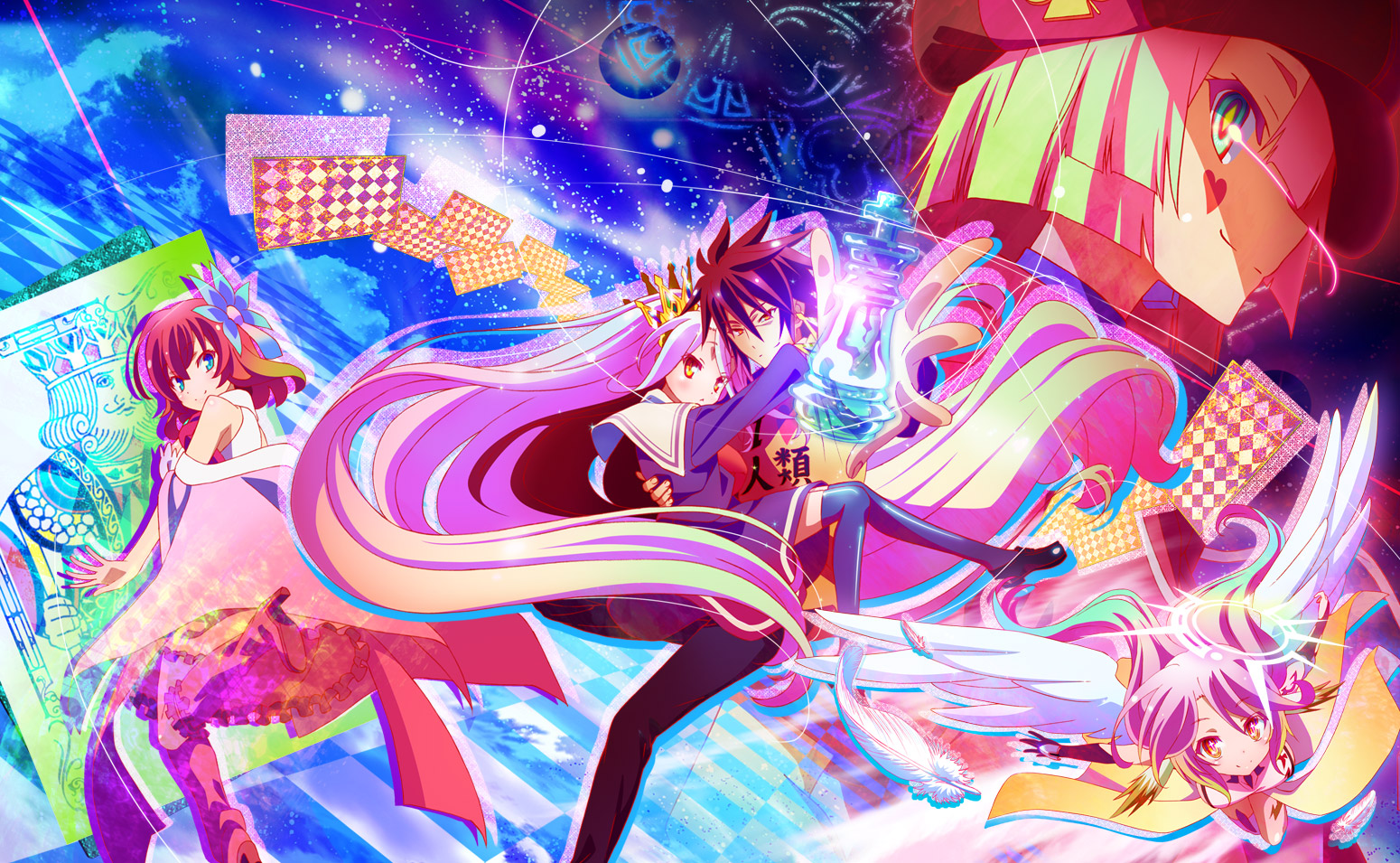
Based on a light novel, No Game No Life is about a pair of NEET gamer siblings of godly prowess, working together to rank at the top of every game they play. They are transported to a world where all interaction is mediated through games, thereby providing a set of predictable, closed rules for society. Sora and Shiro, who together form the undefeated gaming pair Blank (『』), work to conquer each of the 15 other races to gain the right to challenge Tet, the god of the world, for his position. The LNs have been officially licensed and translated to English, which is probably a good thing because S2 never.
I’m going to get this out of the way first: this is not a good anime.
It becomes immediately obvious that NGNL is designed to sell. The main characters are people who spend all of their time on video games, and hate the idea of social interaction. To them, other people are unpredictable and selfish, and trying to communicate with them is difficult and stressful – a philosophy that much of the audience can probably relate to, at least to some extent. However, interpersonal communication is a key skill in life, and those with this skill will inevitably find more success than those without, regardless of the rest of the skillset. It’s not surprising that some people might find this unfair, and by putting Sora and Shiro in a setting where the playing field is more level between introverts and extroverts, NGNL is able to achieve a degree of wish fulfillment for this demographic. Furthermore, NGNL features a rather gratuitous amount of fanservice, and it works hard to cover as many bases as possible – flat chest, fat chest, lolis, catgirls, elves, mikos, etc. At its core, NGNL panders to our lowest common denominator, something which is hard to defend.
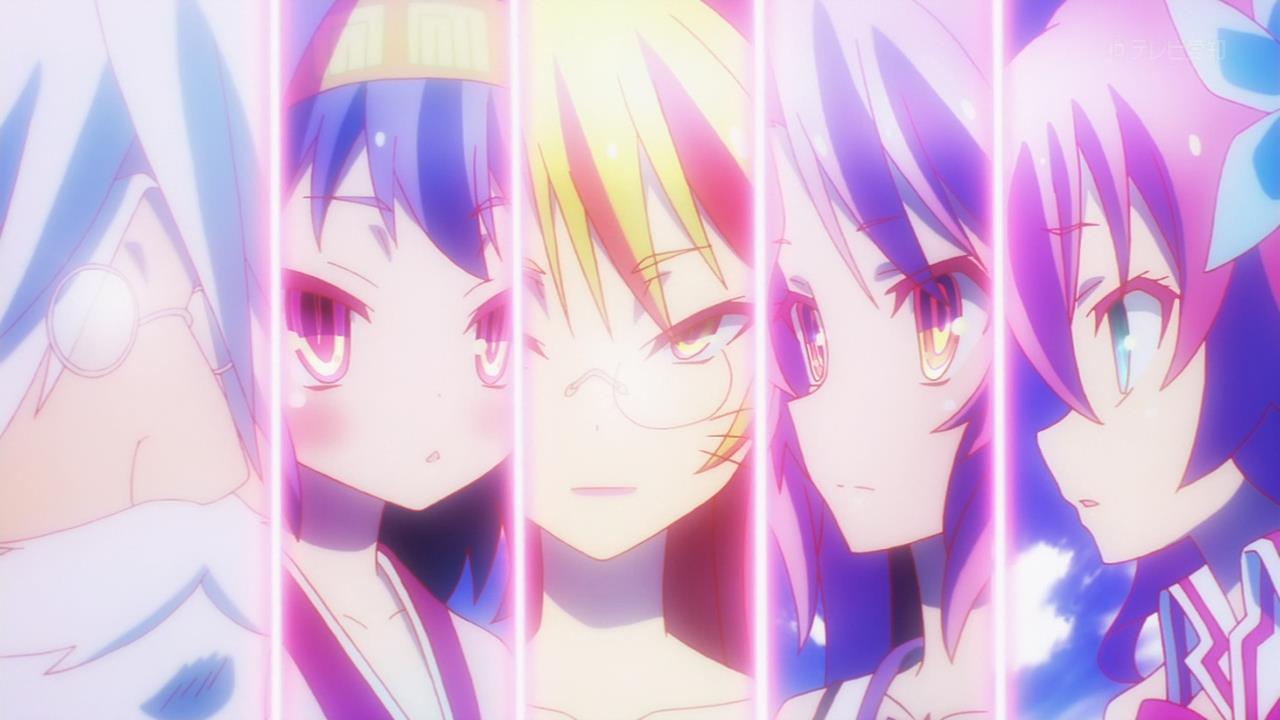
The BD sales department, and that one guy whose job became obsolete years ago but has been working there so long no one has the balls to fire him
In addition, while NGNL tries to sell Sora and Shiro as hardcore hikikomori NEETs, their actions tend to contradict this premise. The series occasionally throws in a gag about how they hate sunlight and popular people, but when the plot demands it, they become bafflingly competent in social affairs. Sora, in particular, appears to have no problem at all communicating with others (regardless of their gender, even), frequently taking the lead to negotiate with their opponents and inspire their allies. He is clearly a born leader, someone who should have no problems becoming prominent in politics and business. Even Shiro, the supposedly quieter and brainier of the two, seems to have few qualms about taking the initiative to explain something to someone or even socialize with another member of the cast. More importantly, Sora and Shiro are not only able to communicate with others, they are able to empathize with them. They work to understand others not just to manipulate them in a game, but to ensure they can reach a happy ending for everyone involved, even their opponents – not what you would expect out of a pair of self-professed misanthropes. In short, Blank is not an accurate portrayal of the NEET subculture, but rather a sexy idealization. They’re what a NEET might like to envision themselves as, which goes to further reinforce the theme of wish fulfillment.
Finally, Blank’s mantra is that they never lose, no matter the game or the circumstances, and this is something they work to uphold in their new world. In other words, they win. Every time. This can be terribly boring since the outcome of every match is essentially set in stone at the outset, and it dampens the tension since the viewer already knows Blank will find a way to win. This leads to another problem that a lot of shounen have issues with – keeping a growing secondary cast relevant. Because Blank is so much better than everyone else at everything, former “boss” characters like Kurami and Jibril end up just becoming the arms and legs for Blank’s schemes once they join the party. They play virtually no role in the strategic process, and are often not any more privy to the master plan than the audience. The worst offender is Steph, who appears to be nothing but a proxy through which Blank provides an exasperated explanation for what just happened on screen.
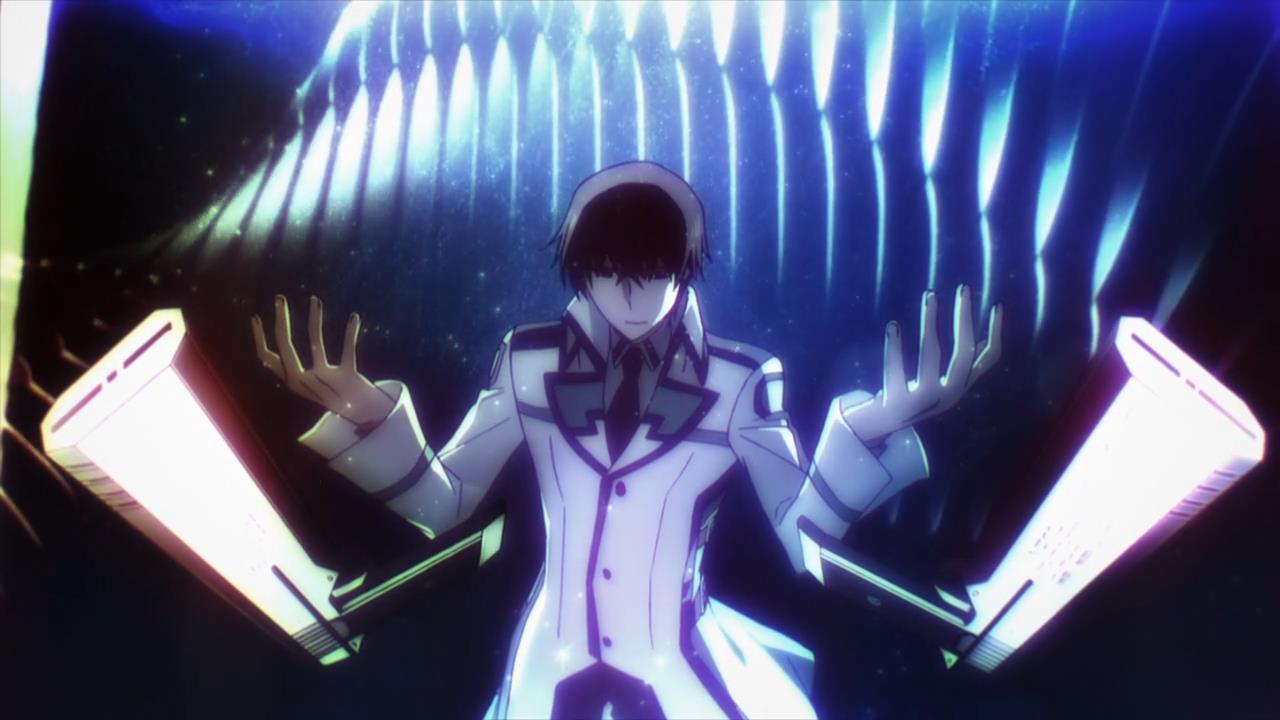
Hey, wait a second…
Indeed, NGNL shares a lot of problems with another 2014 anime I cared very little for. So what makes NGNL so special? Did it just happen to cater to my specific fetishes or something?
Well, maybe, but that’s not all. The concept of “Mary Sue” and how it represents poor writing has become so prevalent in culture that we’re conditioned to dismiss it on sight. NGNL has the incredibly stupid solution of taking Mary Sue and distributing her over two characters. As Sora and Shiro state themselves many times, it is the two of them working as one that make up Blank. It’s two characters with half the skillset each who both know and trust each other completely, and that may be what makes them so appealing despite being more overpowered than a middle schooler’s notebook drawings. I think one of the reasons SoL is so popular is that it often portrays friendships like this where characters get along because their differing personalities complement each other perfectly, and I guess it’s easy to fantasize about having relationships like this (because they almost never work out that conveniently in real life).
I also think it’s somewhat interesting that NGNL inherently has no villains, only an unusually friendly antagonist that’s acting out of boredom. Since the ultimate goal at the outset is to bring the 16 races of Disboard together to challenge Tet, we know all of the characters will eventually come together and cooperate under Blank’s banner. The whole setting is one big game, and so in the long run, there’s really not a whole lot at stake. As a result, while NGNL does make some statements regarding philosophy and humanity, they’re not very heavy, and so similarly to Tokyo Ravens, NGNL can keep its focus on the games rather than becoming too overbearing with themes. Related to this is the animation, which is markedly colorful. While unusual, I think it’s the correct artistic decision in this case, and it complements the light atmosphere well.
NGNL is yet another entry that gets away with poor writing by disguising it as something else, and I don’t know whether that says more about the anime or about my perception of poor writing. Regardless, I found it quite entertaining, and that’s good enough for me.
tl;dr version:
Pros:
- Team of Mary and Sue is better than Mary Sue
- Doesn’t take itself more seriously than it needs to
- Quirky, fitting animation
Cons:
- Mary and Sue are technically still Mary Sue
- Gratuitous fanservice
- Superficial secondary cast
- S2 never
3. selector infected/spread WIXOSS
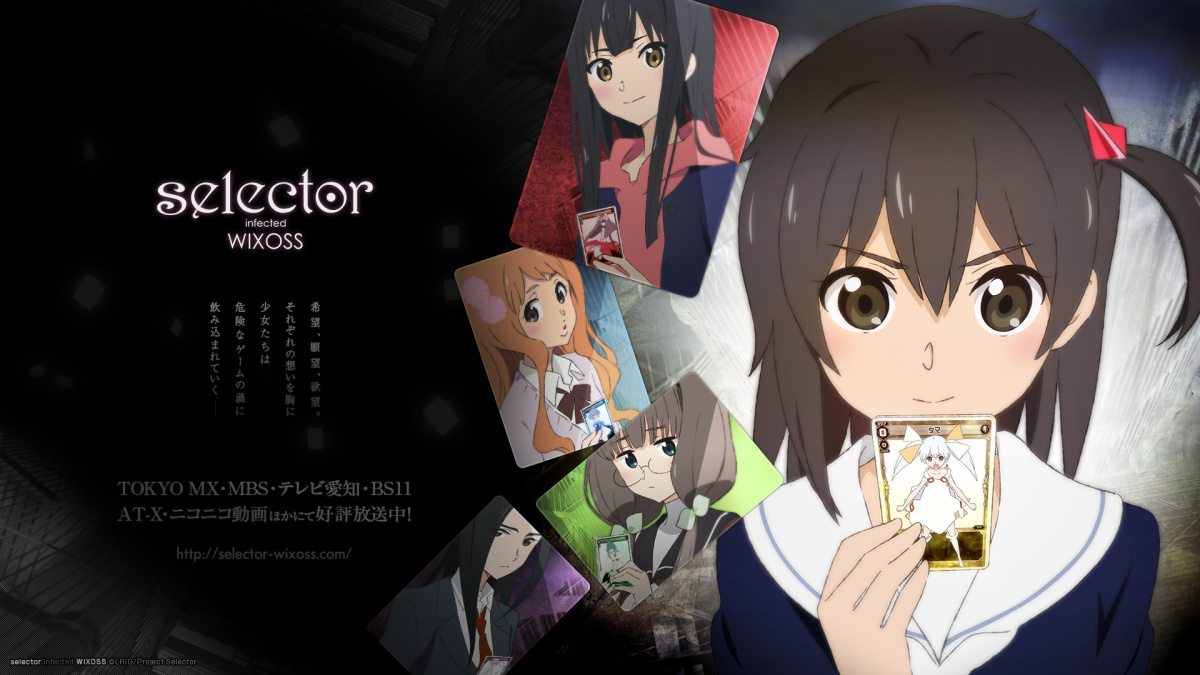
Spoiler warning: This is a warning that there are some spoilers.
I stay away from card game anime because they are usually used to promote sales of the actual card game, and since the market for card games tend to be young boys, the stories for these anime end up being a simple, bland mix of shounen and sports. WIXOSS, on the other hand, features an almost exclusively female cast, and is written by Okada Mari, who worked on a number of series I enjoyed in the past.
WIXOSS makes it clear from the start that it will not be a light-hearted anime. The premise focuses on a tournament-like system that allows strong players who defeat many opponents to be able to make a wish come true. Comparisons to Puella Magi Madoka Magica are inevitable, as Madoka appears to be the new standard for anything involving girls, magic, and dark themes.
The first thing I want to mention is actually a pretty common complaint, and perhaps one that has some basis – the mechanics of the card game in question are never well explained. The game is played with a single avatar, the LRIG, representing the player, with other cards being creatures and abilities used to attack the opposing LRIG. A level-up system allows the LRIG to use stronger attacks as the game progresses. Beyond this, however, the mechanics are quite unclear. Numbers are very rarely used to explain the current state of any given battle, and the strength of abilities players use (and even the number they get per turn) seems to be more dependent on the mental state of the player than any logical system.
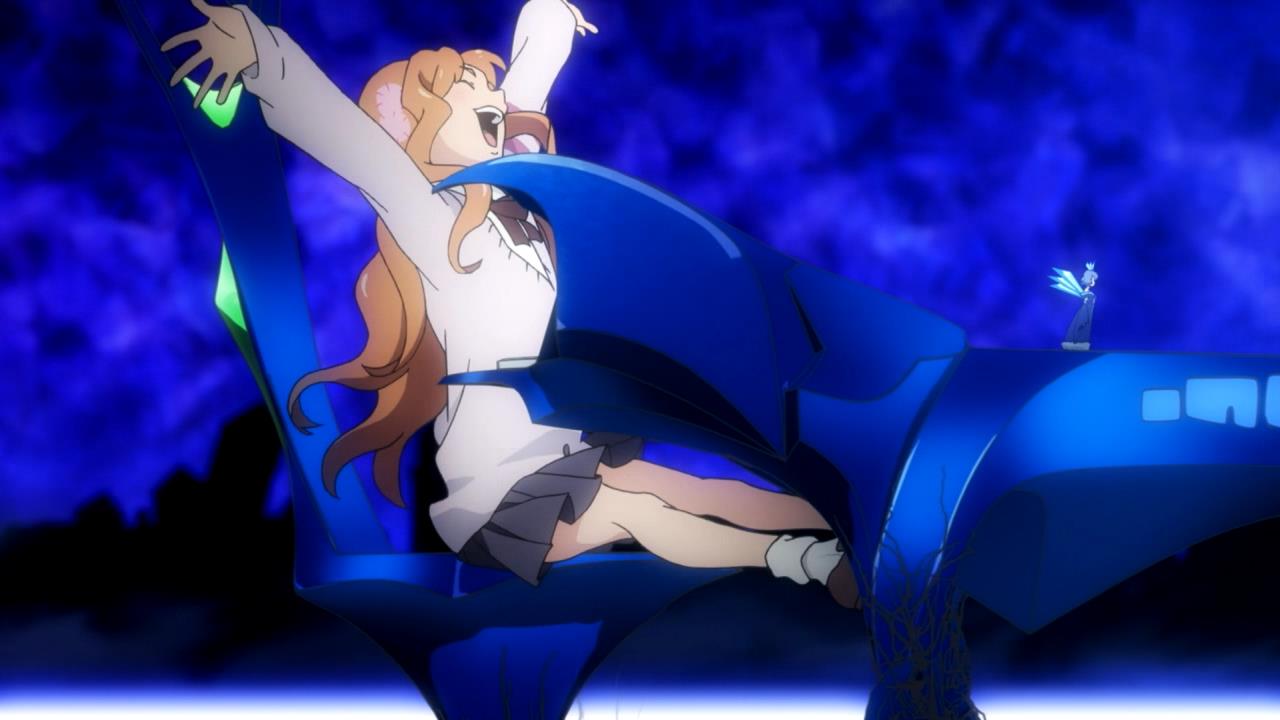
Except blue decks being for trolling, which appears to be a universal mechanic across all card games.
Honestly, however, I think this is mostly fine for WIXOSS. There is an actual WIXOSS card game that obviously has well-defined rules, but the anime is not designed as either shounen or sports. The story is not a chronicle of the characters’ gradual mastery of the game, but rather their unravelling of the origin story of the game itself and their character development along the way. In that regard, giving too much attention to the mechanics of the game might have actually distracted the audience from the more important story. Mahou shoujo anime don’t explain how the magic works because only the characters’ relative magical strength is important – this is the same thing.
The first season introduces a number of heavy themes, the most predominant being the risk associated with making a wish (where most of the comparisons to Madoka are probably rooted). As the mechanics of the game and wish-based system around it are revealed, we are also shown what kinds of wishes participants are interested in – simple ones like dream careers and friends, and darker ones too.
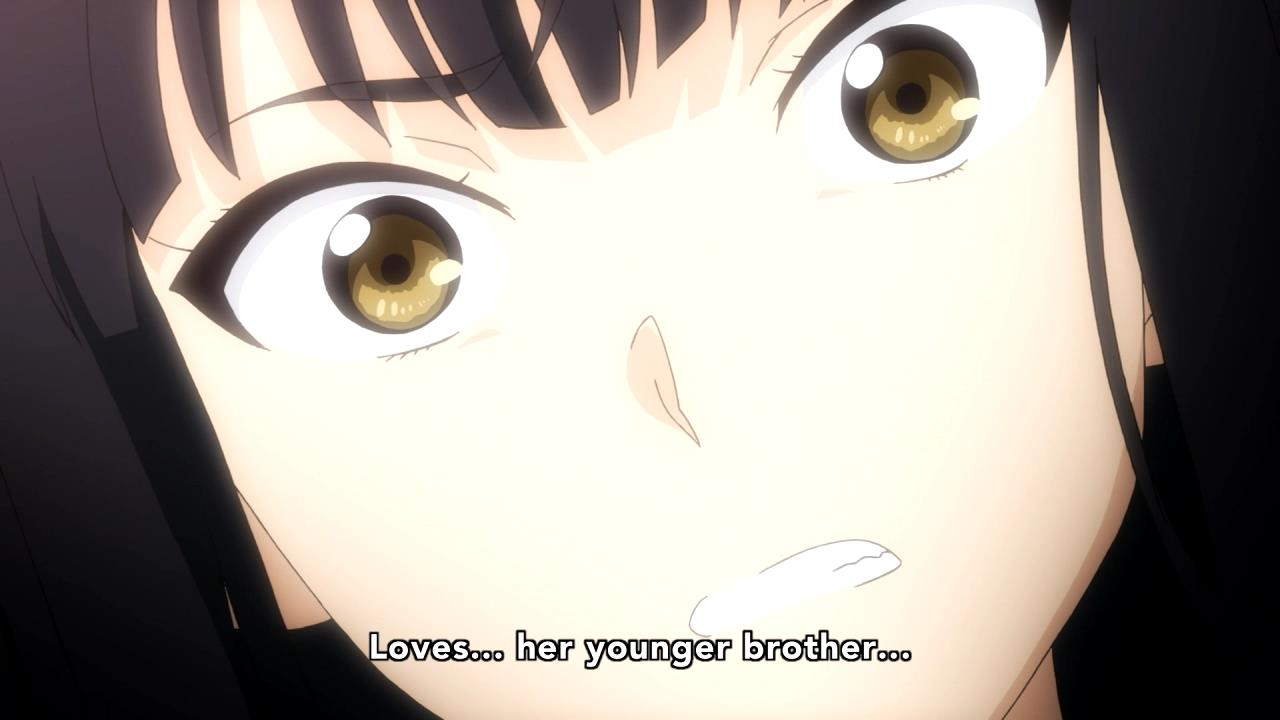
Pictured – normal healthy teenager fantasies
This season puts a focus on the story, and uses its characters to explore its themes. Yuzuki is part of a more realistic, somewhat sobering message on incest, outlining not only the social and legal ramifications of such a pursuit, but its effects on the romantic target, who may not even reciprocate such feelings. It feels like a not-so-subtle prod towards other, increasingly common incest-themed anime, which typically portray a fluffier version of sibling romance. Iona and Ruuko, who have no immediate wishes outside the WIXOSS system, are used to look at the bigger pervading themes of human greed and the subjective value of emotion. Akira acts like a mirror to bring the cast’s true nature into light, and also serves as the “voice of society” – what people might actually think of some of these wishes, and ensuring the cast faces them properly.
Season 2, on the other hand, feels like it was written and directed by completely different people. Certain subplots (or at least subplots I imagined) are dropped, such as Ruuko’s family situation, and focus is diverted from the story and themes to make a more character-driven show. That’s not necessarily a bad thing, of course, but due to how heavily the balance was tipped in this case, the effects are rather jarring, particularly on the characters themselves. Many characters that originally served as writing tools or lens, such as Ruuko, Akira, and Iona, suffer some awkward transitionary development in an effort to give them more substance and make them more independent of the writing. Even by the midpoint of the second season, these characters are almost completely unrecognizable to their first season counterparts (which is a pity, as they were originally very interesting characters to me).
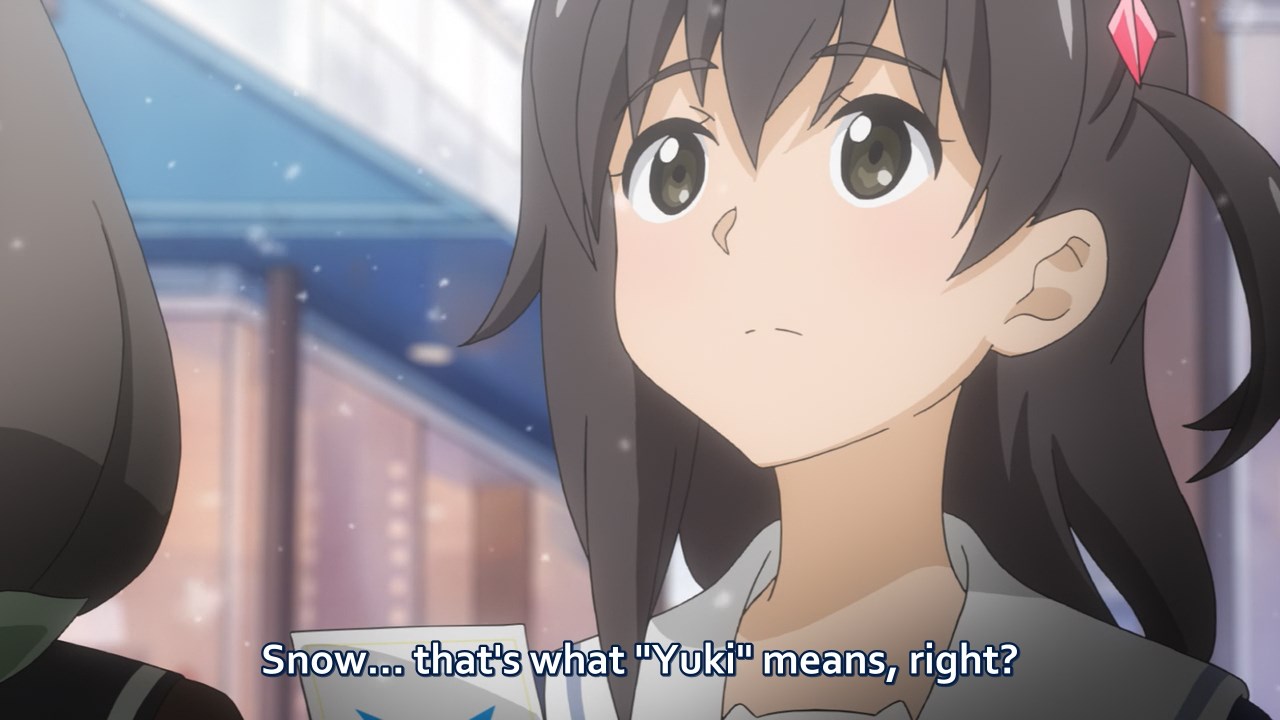
TL Note: Yuki means failed character development
On the other hand, some characters that were originally backseat support are better off for the change. Hanayo’s character is explored a bit more, although it’s primarily about her own feelings rather than a continuation of the incest thread. Chiyori and Eldora, who aren’t really tied to anything (and were therefore pretty pointless in the first season), probably fit the new season theme the best, starring in a fairly interesting and self-contained arc.
The first season was a good beginning and the second season was a good end, but not for each other. This dissonance noticeably dampens how enjoyable WIXOSS was, and makes it feel a bit wishy-washy. The individual components are fairly well done, however, and this does deserve merit.
I don’t want to buy any cards, though. 0/10 product placement.
tl;dr version:
Pros:
- Interesting themes and characters
- Individual seasons are done well
Cons:
- Seasons don’t mesh well together
- Character development lacks fluidity and coherence
2. Barakamon
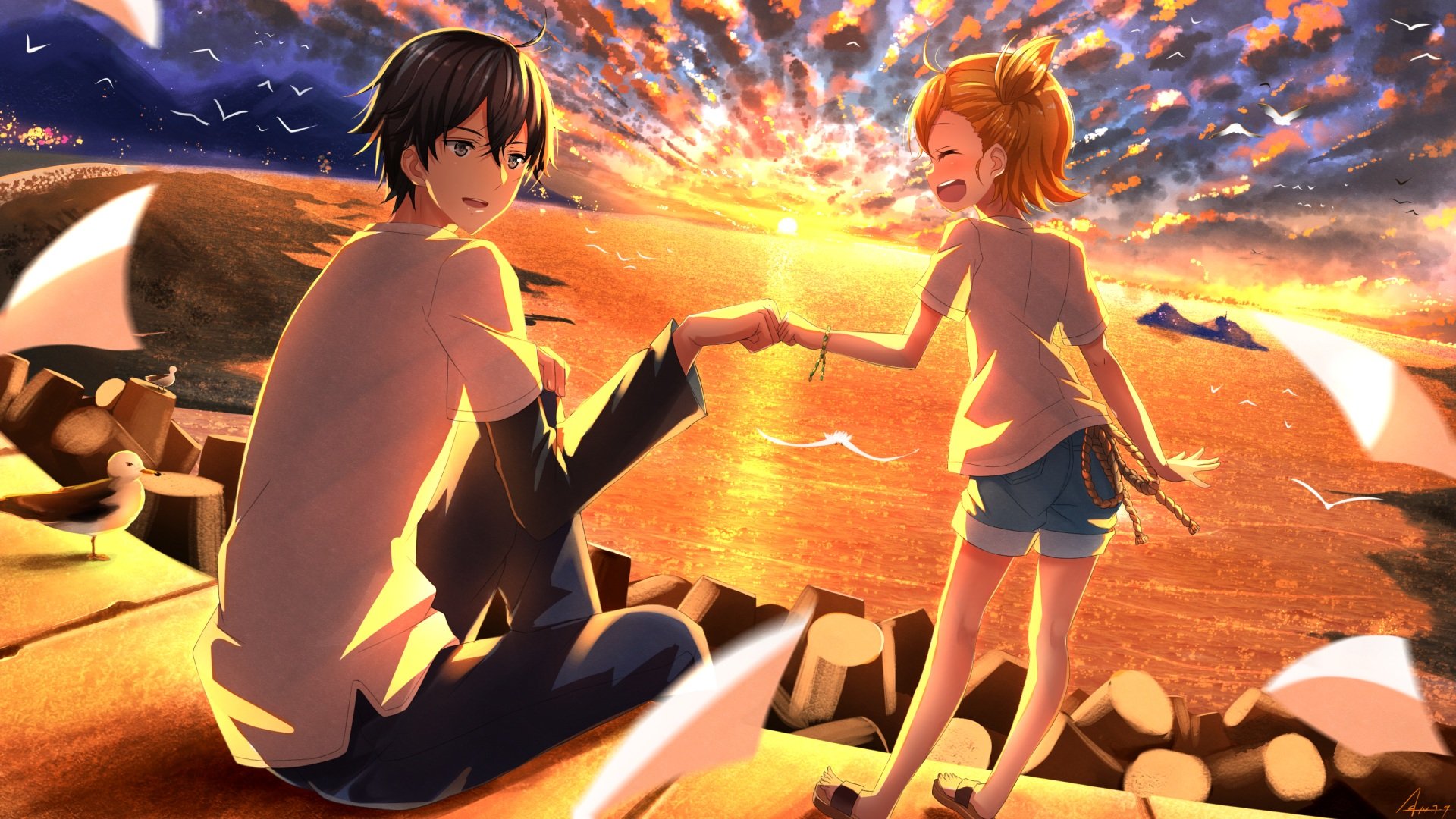
Barakamon is a slice-of-life about a young professional calligrapher who is exiled to the Bumfuck Nowhere Islands after breaking the illusions of an art director who criticized his work. I think we straight-up skipped this one during our seasonal sampling for some reason.
As with Hanasaku Iroha from my 2011 list, Hyouka from 2012, and Gingitsune from 2013 (vaporware edition), Barakamon sits on the list as this year’s role model for slice-of-life. Turning away from the well-trod road of 4-girls-4-koma, Barakamon takes the thornier path of creating a developing character cast.
Or so I thought, until I rewatched Barakamon and realized that none of the characters save for Seishuu, the main character, really change at all over the entire show. Because of that, despite feeling vivid and full of life, the cast seems distinctly inhuman. On second glance, it’s not the characters that develop, but rather their relationship with Seishuu, which in turn comes from development on Seishuu’s part. As a city boy, Seishuu initially struggles to acclimate himself to the unrestrained, unrefined life of the countryside, which leads to awkward relationships with the natives. As he gradually internalizes the simplicity of his surroundings, he opens up to both the islanders and himself.
The simplicity Seishuu finds in the country life is reflected in the construction of the anime, which may be what makes it so appealing to me. Perhaps the most surprising element of Barakamon is its utter lack of a certain element – romance. Despite Seishuu being a modest 23 years old, all of the female characters are at least a decade removed from him, being comprised entirely of children, middle-schoolers, and married middle-aged women.
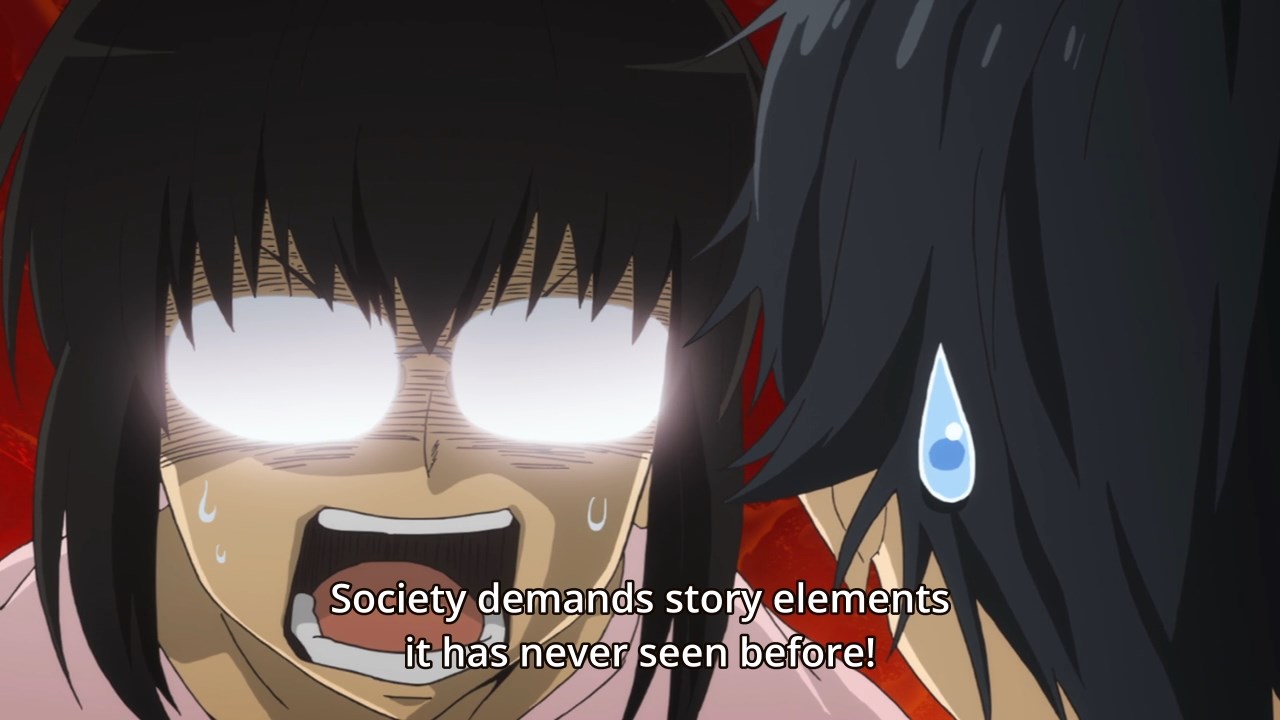
My dick is confused by Barakamon, so it must be art
Without the ulterior motives and misunderstandings of romance poisoning the well, the relationships Seishuu holds with the other cast are refreshingly straightforward and honest. This relates to the point I made in the NGNL entry, which is that these relationships are appealing because they reflect what we’d like to see in reality. We want relationships with people that are simple and honest, but differences in social status and culture require us to compromise. We hide skeletons in our closet while we laugh and judge others for theirs. The life portrayed in Barakamon is so simple that everyone puts their skeletons in a communal closet, and as Seishuu find himself with increasingly little to hide, he ironically finds himself becoming more and more of an individual.
I always hate using the word “comfy” to describe something, but Barakamon should get points for managing to be relatively meaningful for something so easy to watch. I won’t say it was a masterpiece, but for reminding me that anime is a form of entertainment before it is a form of literature, Barakamon gets its spot here.
tl;dr version:
Pros:
- Not any more complicated than it has to be
- SoL that emphasizes characters over situations
- Not overbearing in either comedy or morals
Cons:
- Calligraphy is just a context, and not explored in much detail
- Technical execution is average
- Simplicity leads to a somewhat underdeveloped secondary cast
1. Ping Pong the Animation
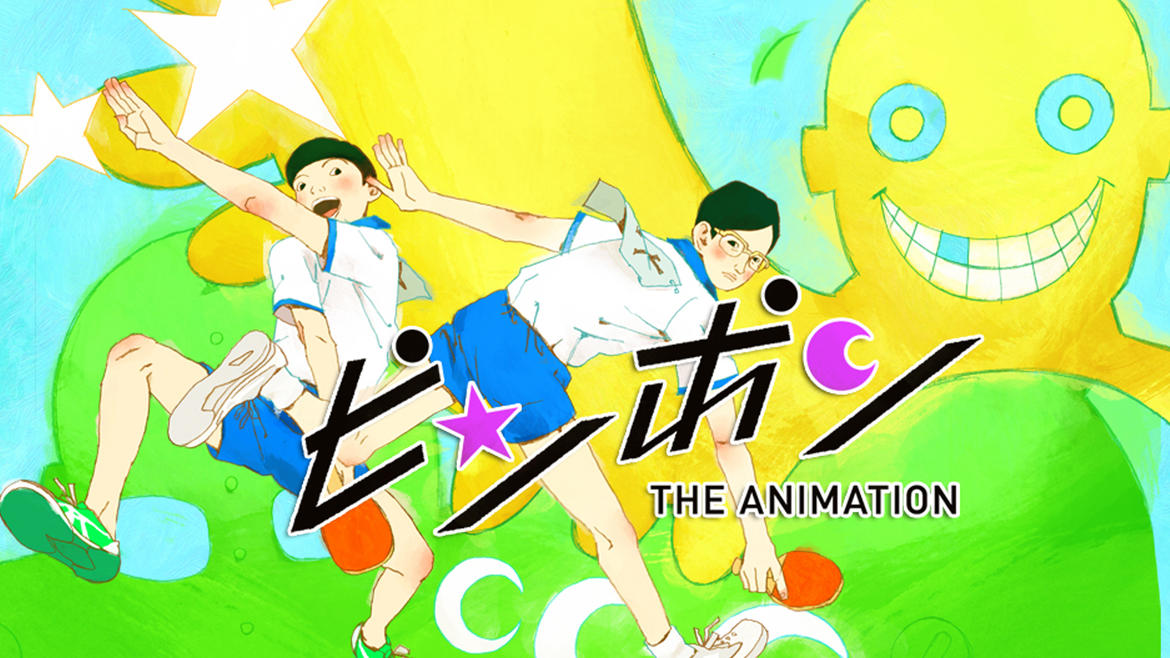
It is exactly what it says on the tin. This is an animation of a series about ping pong. Also, there are no straight lines because maybe the author’s geometry teacher made fun of him, I don’t know.
Indeed, the art style is probably what stands out the most. It’s weird and unconventional. It looks sloppy. It looks ugly. Is it wrong? I don’t know about that. It can be distracting, especially at first, and it almost made me drop the series completely. But after watching it, I realized an orthodox style would have been more distracting. The purpose isn’t in the visuals, but in the players. An orthodox style would suggest an orthodox series, but Ping Pong doesn’t feel that way. By being so blatantly different, Ping Pong makes the viewer more aware of it as an individual work, and not in comparison to other sports series. Is it done well? I honestly don’t know, because it’s too different from what I’ve seen to judge. I’m not going tell you this is modern art, and that you just don’t understand. But still, I do believe that an orthodox style would have been worse, in a subtle way.
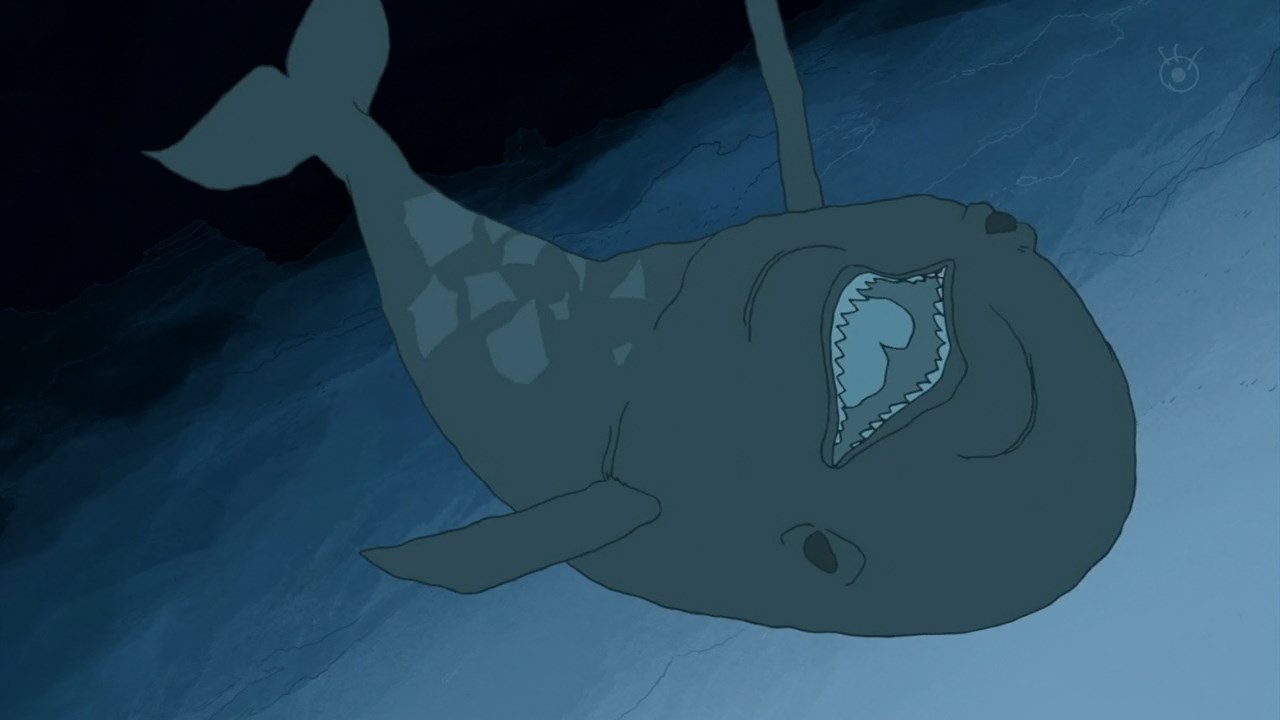
A subtlety deeper than the ocean.
I’ve seen my fair share of sports anime and manga, and the theme of talent vs. hard work is nothing new. Because giving up is seen as the worst possible outcome, we want to believe that hard work always wins, because we don’t want to be discouraged from challenging people with talent. But it’s not always so easy, and Ping Pong really brings this to light. To say that effort can take you to the top just as easily as talent is a naïve statement, one that’s touted by people who have never truly faced that divide themselves, and talented people who mistakenly believe that it was their effort alone that made them successful. What we often forget is that while hard work can often overtake talent, it doesn’t overtake talent that works hard. The tortoise only beats the hare that sleeps, not the hare that runs.
I think there is a point for most players in any competitive activity where they realize there are people that are just better than they are. People who can match their effort hour-for-hour and get twice the return for it. This in of itself is not the important revelation – it’s how the player reacts to it that matters, and this is part of what makes Ping Pong so interesting to watch. Some players will push forward anyway, and carve out a place somewhere in the sport. Not at the top, where only the hares that run may tread, but still an accomplishment to consider, maybe. Some players will burn out and quit. Some players will move to coaching, instead. And they can all be equally valid choices, depending on the player. There is value in trying, but there can be value in giving up and repurposing, too.
This is what I think Ping Pong portrays that so many other sports series don’t. People change. They find new talents, new values, and they reprioritize. The sport doesn’t have to be everyone’s ending. Ping Pong is about people, not players. People whose value does not end at the sport. It may be a disappointing portrayal for viewers who want to see something more like The Prince of Tennis, a sentiment I can relate to, but for me, this was the best sports series I’ve seen since Chihayafuru. It reminds us that people play sports.
As with most things that end up at # 1 on my lists, I don’t know if I should recommend this to everyone. This became something of a Hipsters’ Choice Awards winner in the anime community, and I don’t want to give my recommendation as an extension of this vague “it’s different so it’s good” concept. I want to give my recommendation on the basis that it made me reflect on myself as a person, particularly one who considers excellence to be a virtue.
tl;dr version:
Pros:
- A portrayal of people over players
- Simultaneously realistic and inspiring
- OP and ED were great
- Weird animation
Cons:
- Still had some unnecessary generic shounen elements
- Weird animation
Closing Thoughts
Maybe anime is getting worse, or my tastes are changing, or I’m just slowly outgrowing this hobby altogether, but I always feel like there are fewer anime every year I really enjoy. At the end of the year when I sit down to write a top ten list, there always seem to be two or three that stand out, and I end up scrounging around for things that I didn’t actively dislike to fill out the rest of the list. Ten is such an oppressive yet arbitrarily round number for a list.
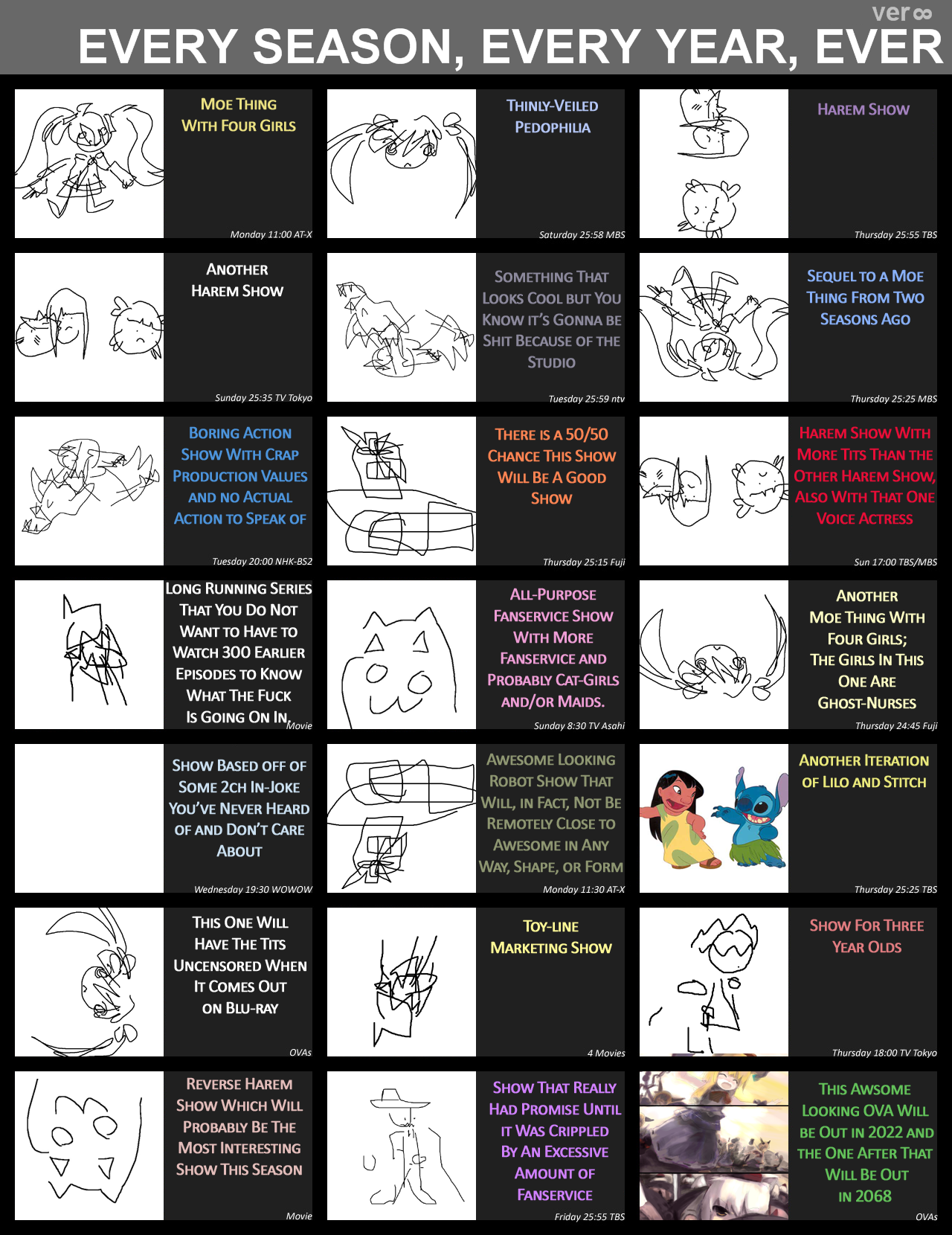
Yet somehow it seems uncouth to copy Matt’s better idea and just do a top 5 instead
Luckily, those 2-3 anime always seem to make the rest of the year worth it, and make the list worth writing. See you in 2018, for the top ten of 2015!